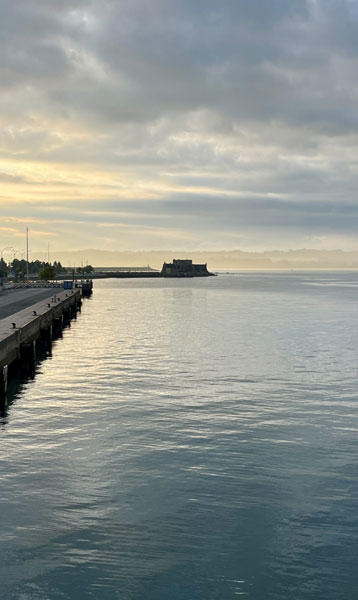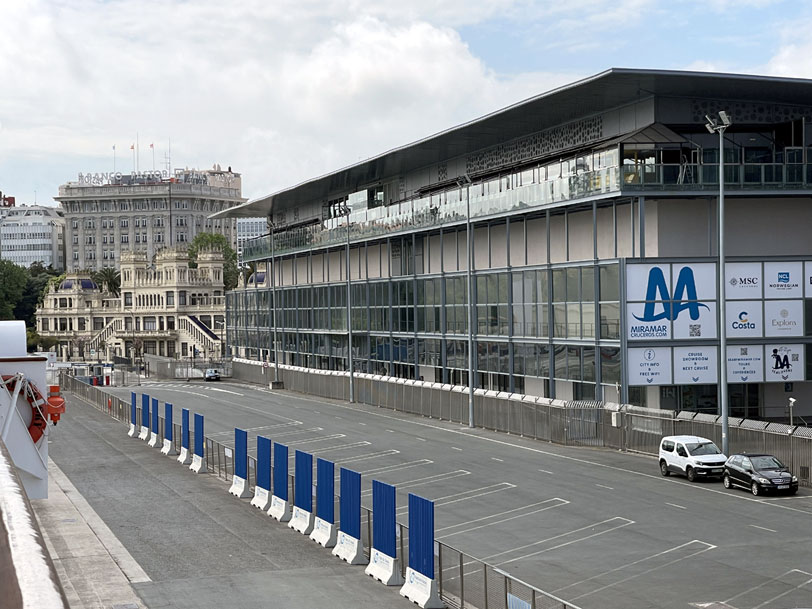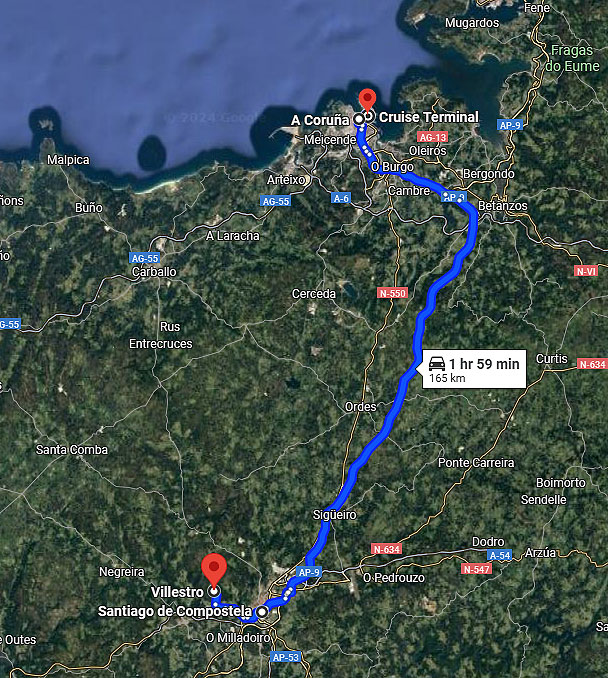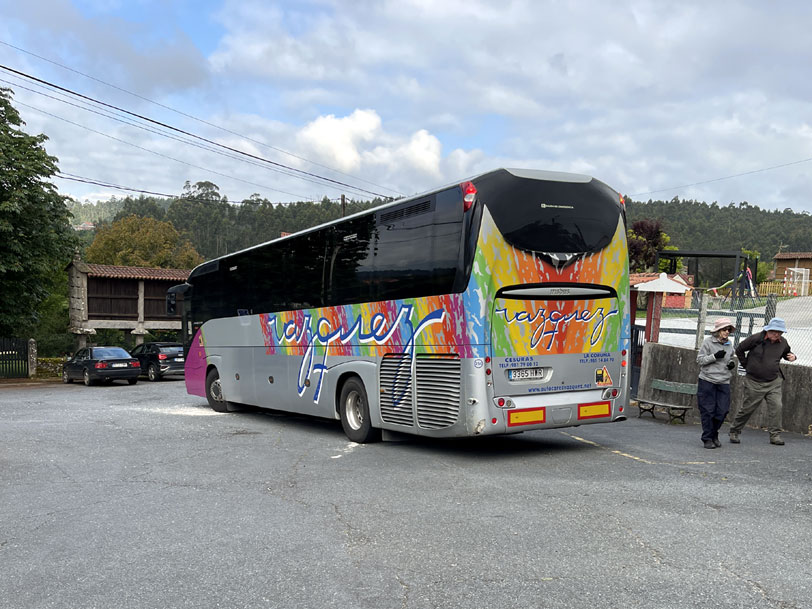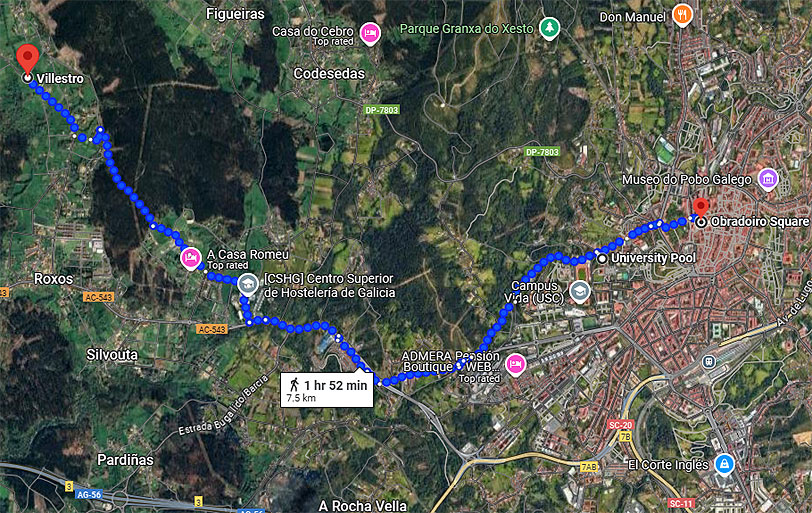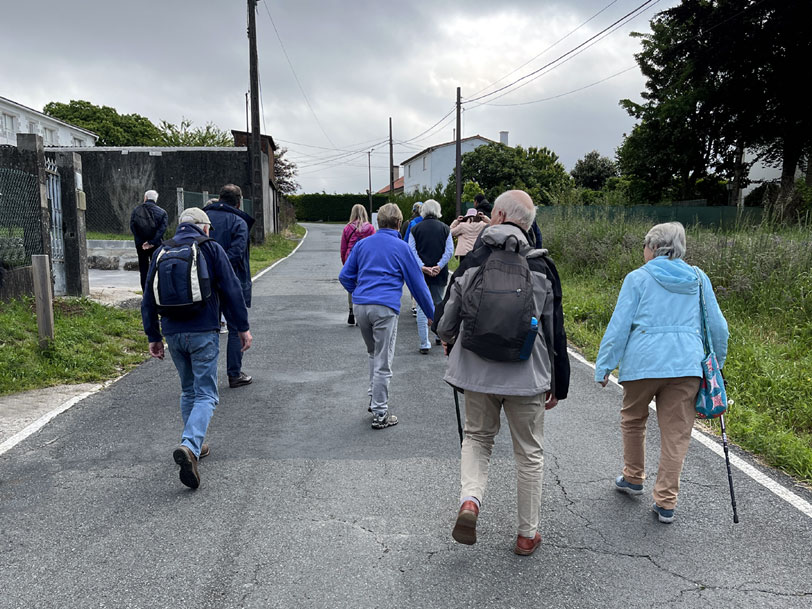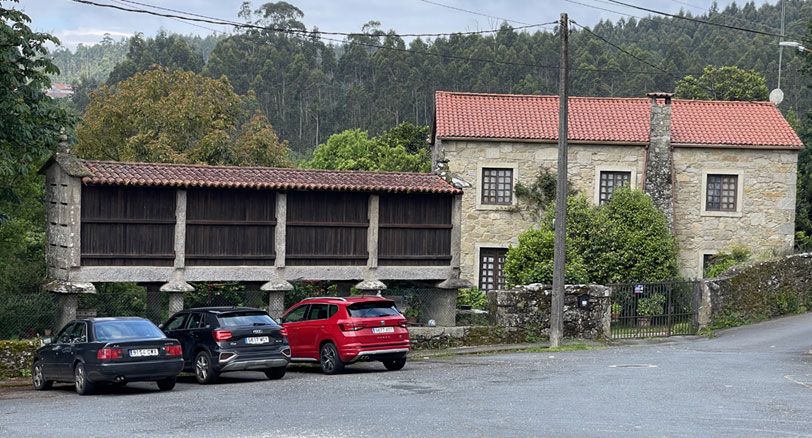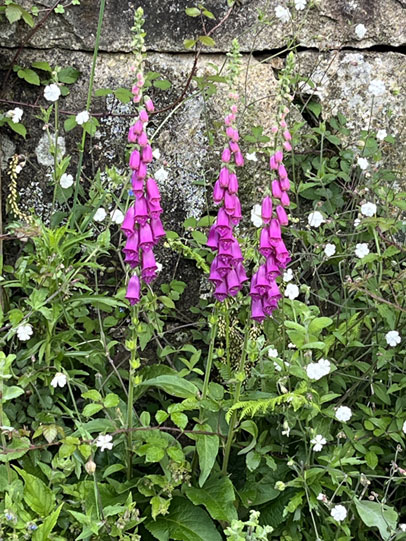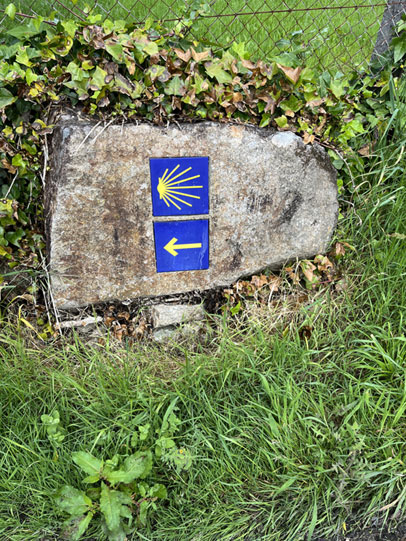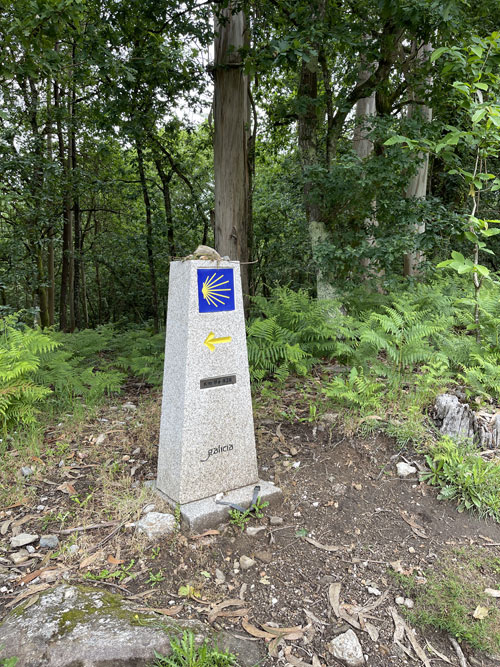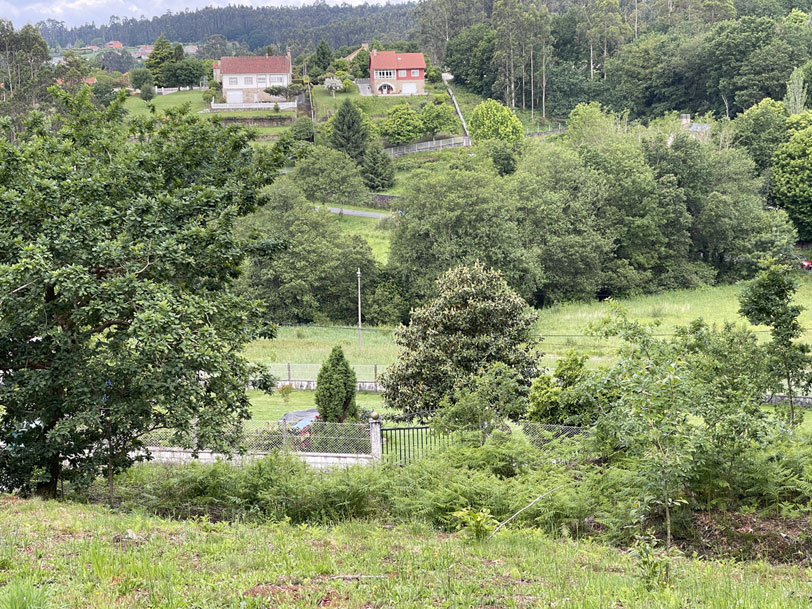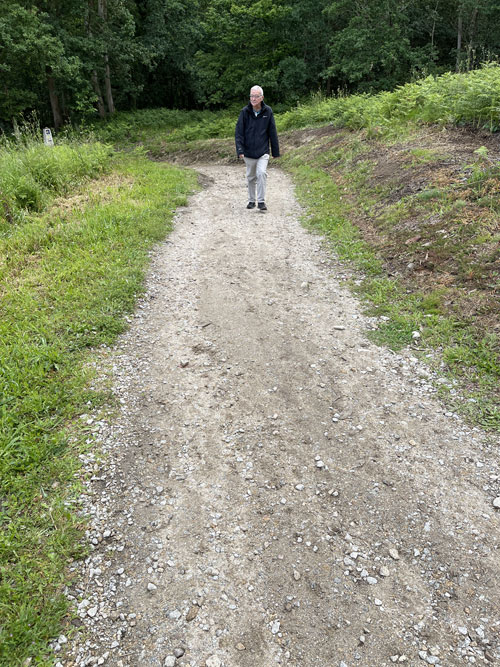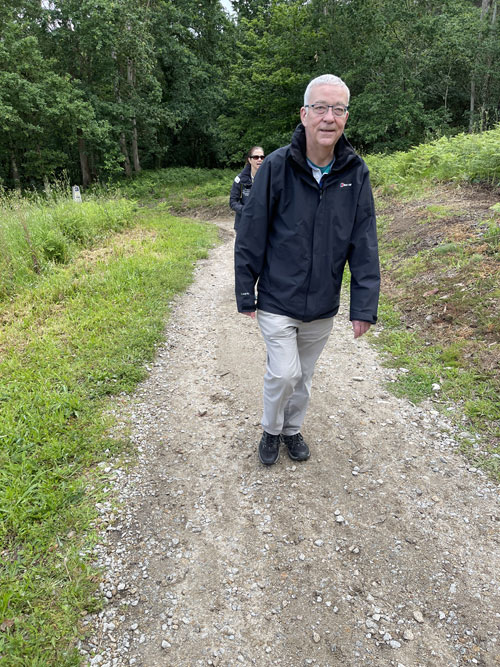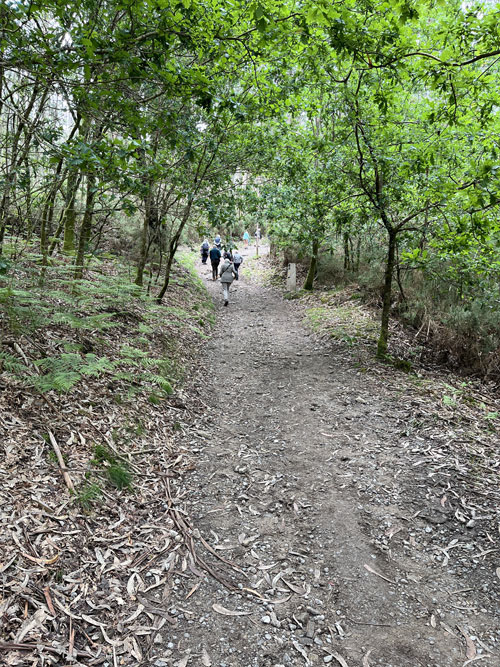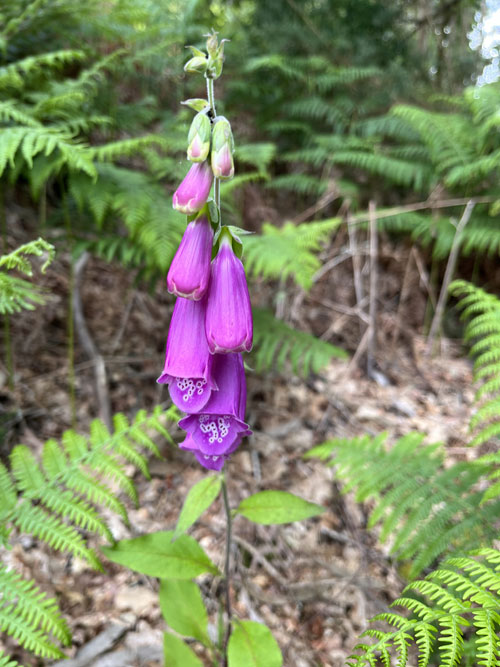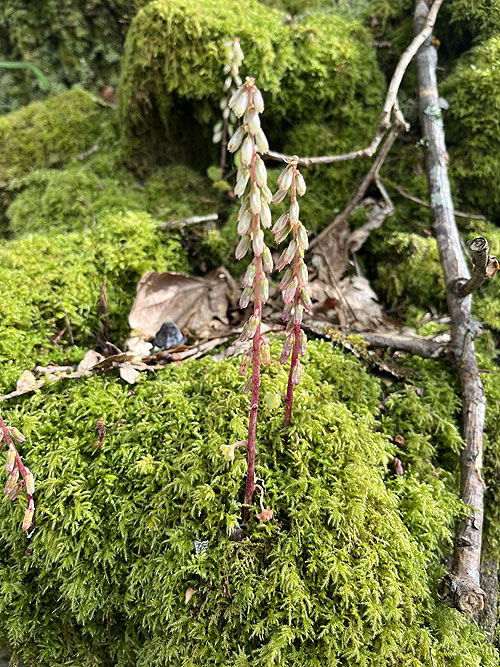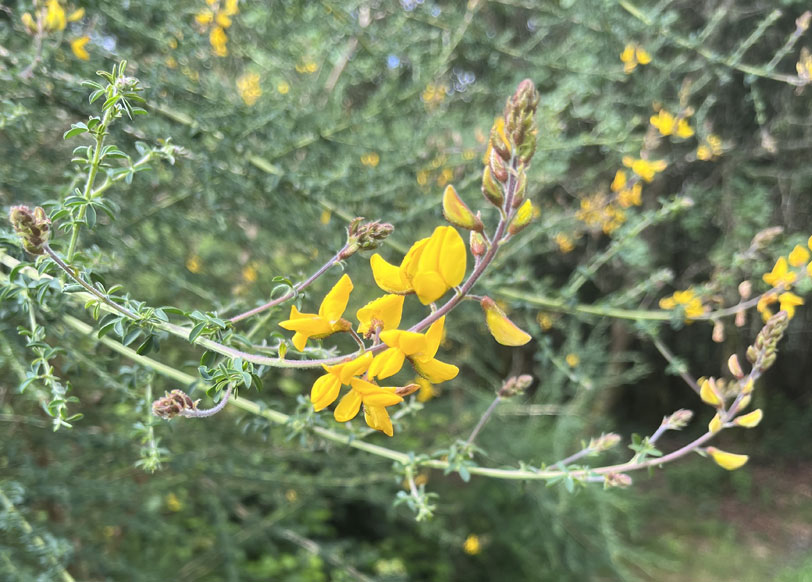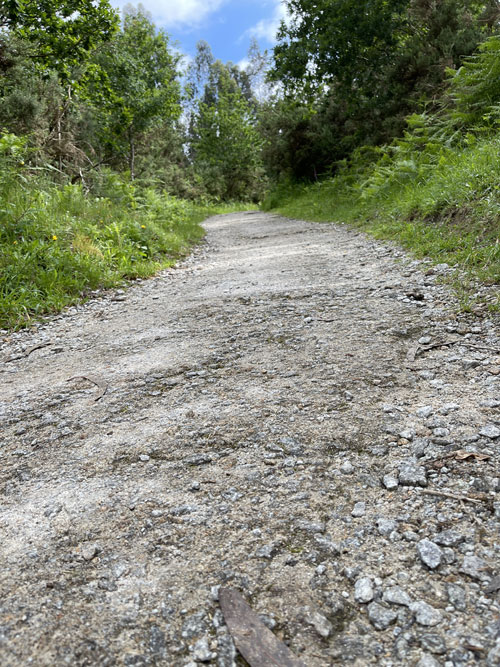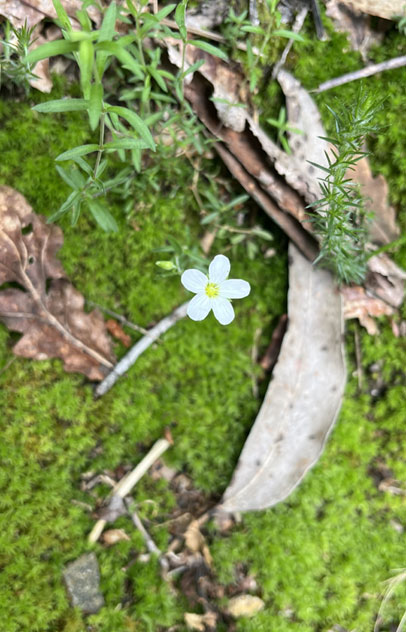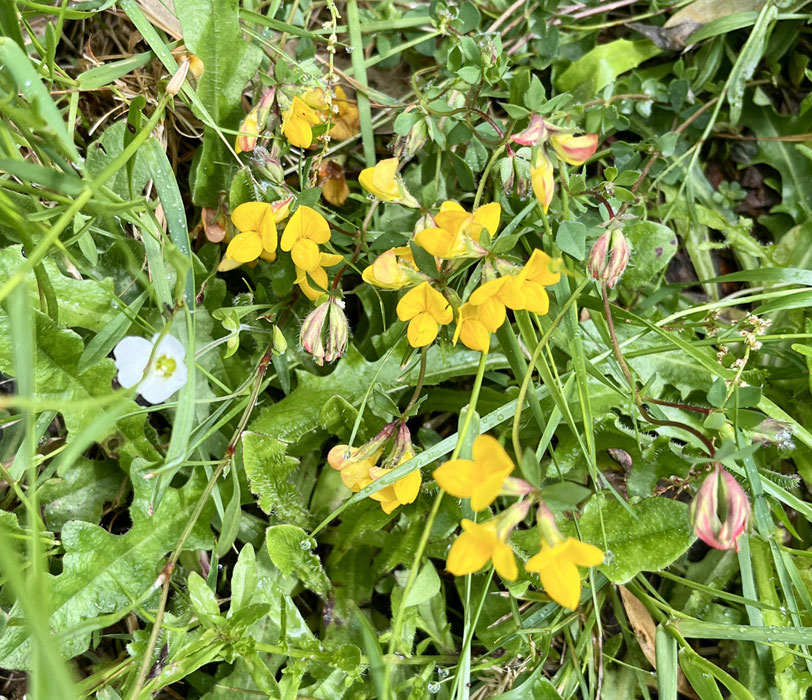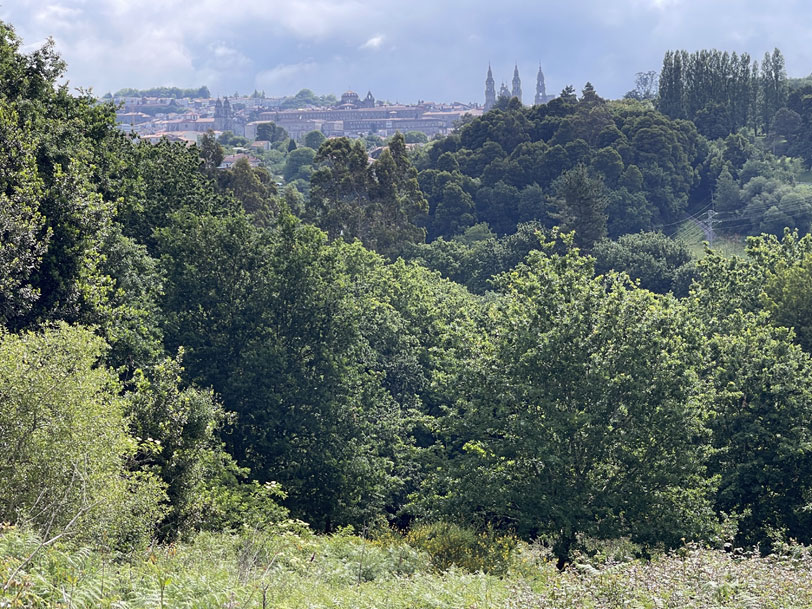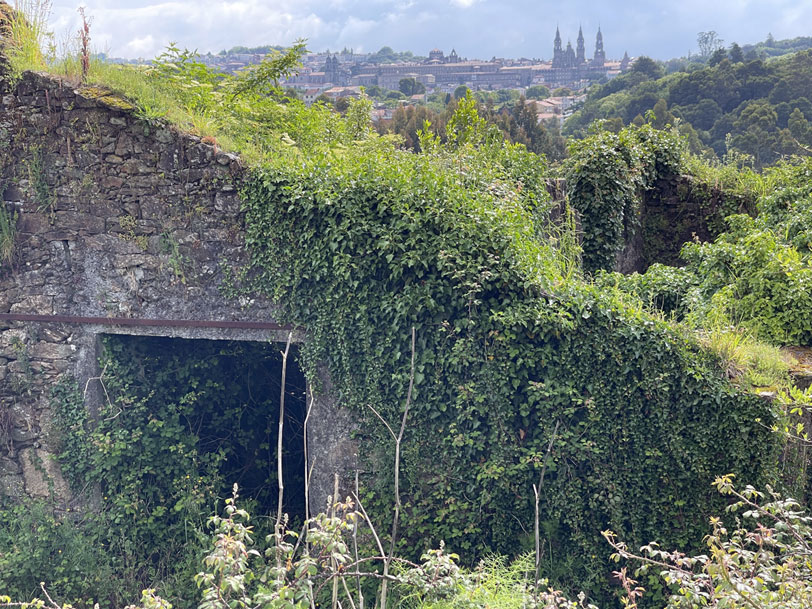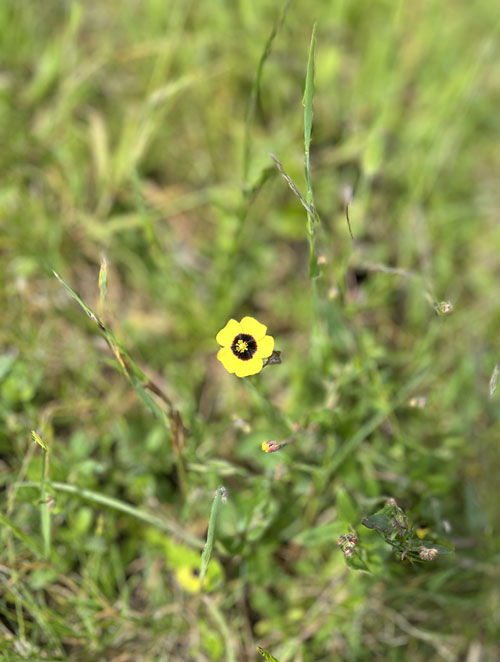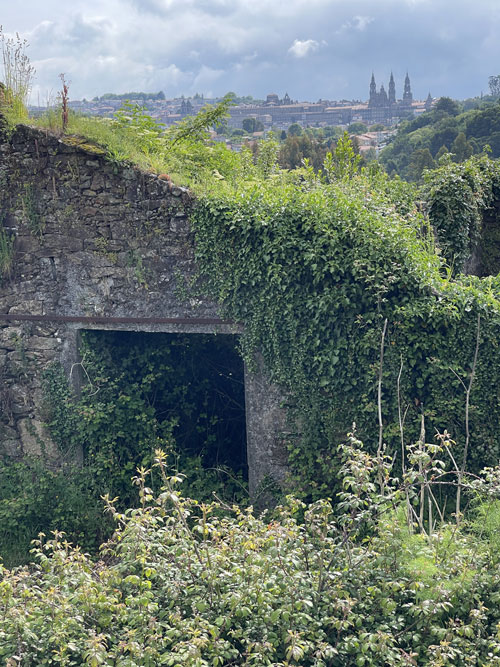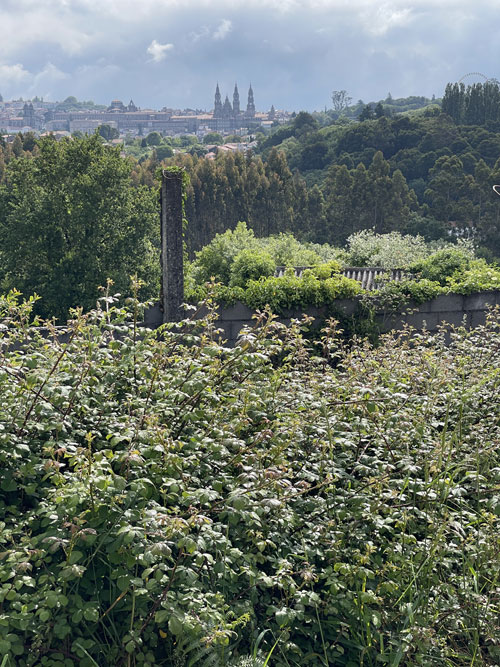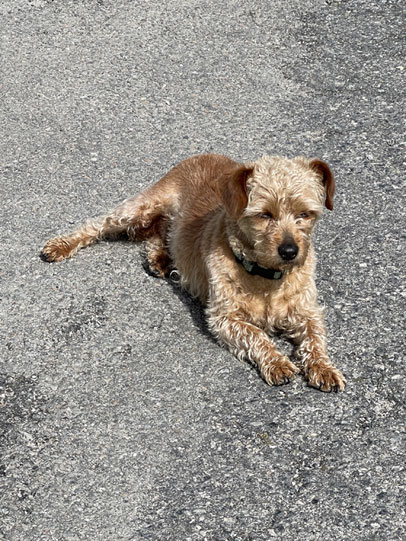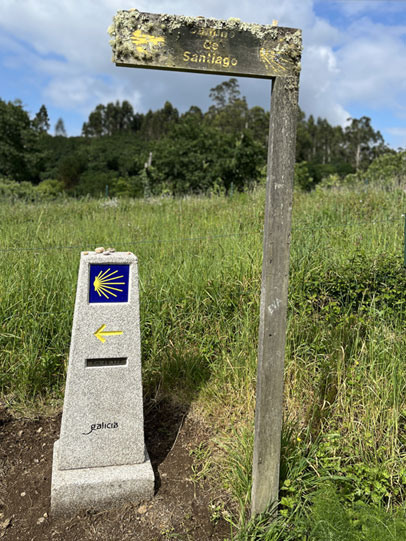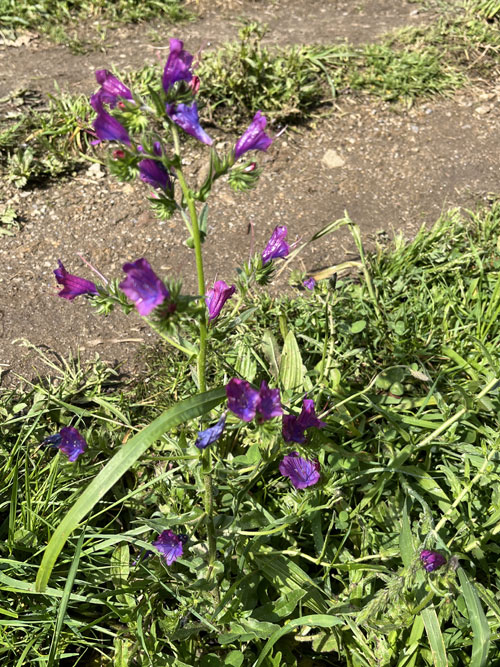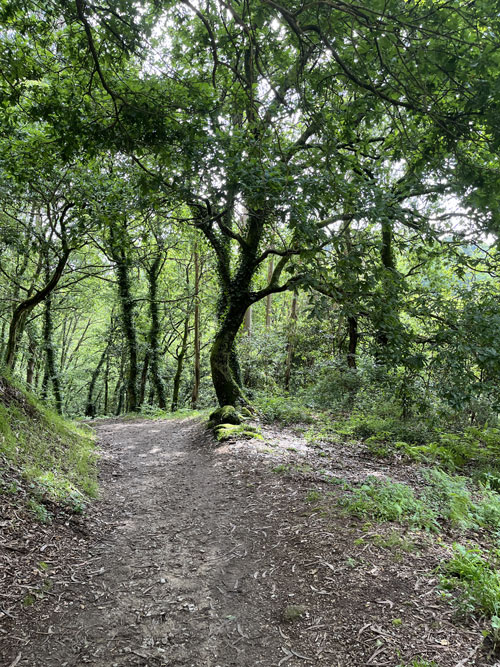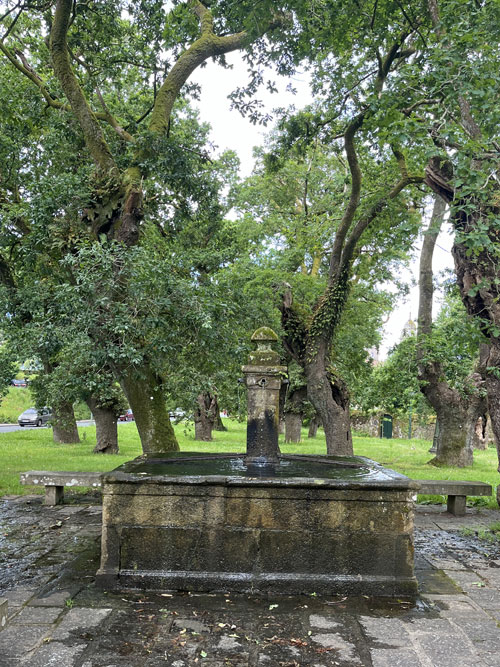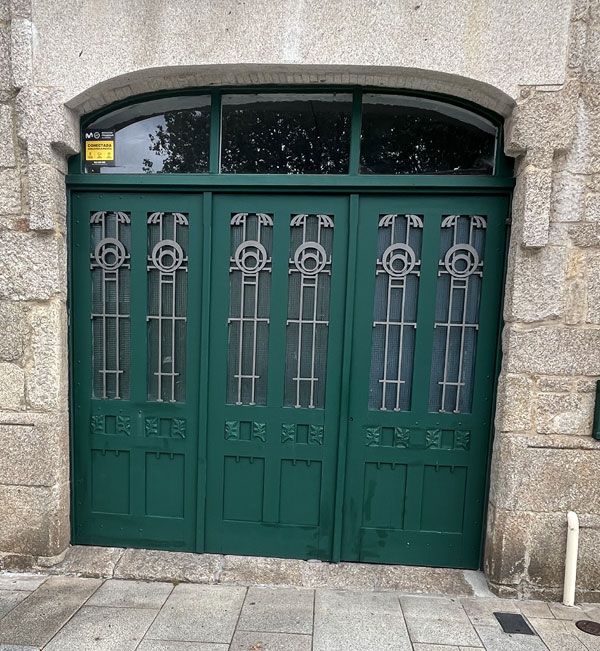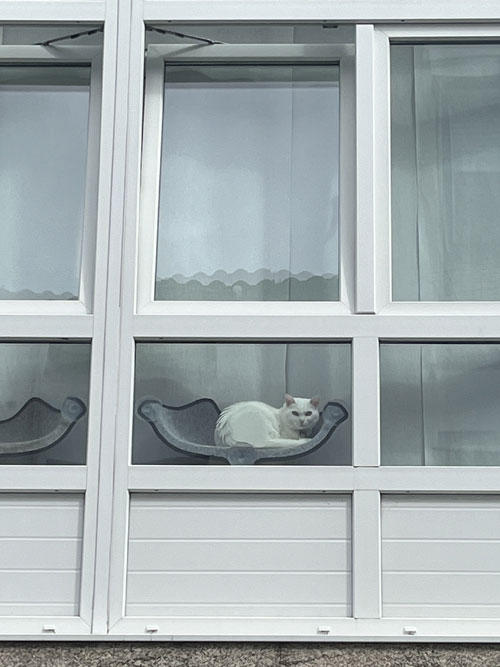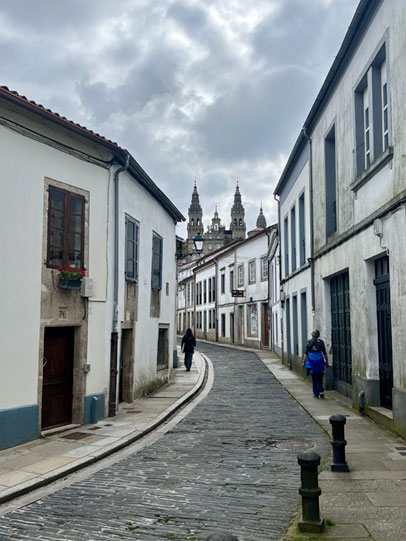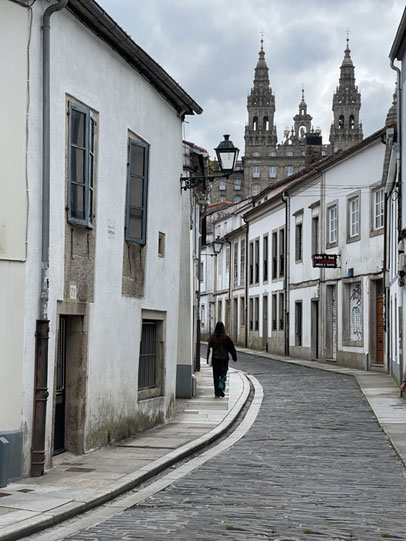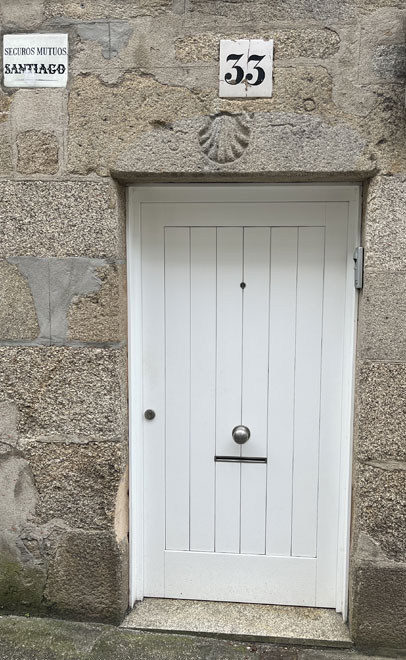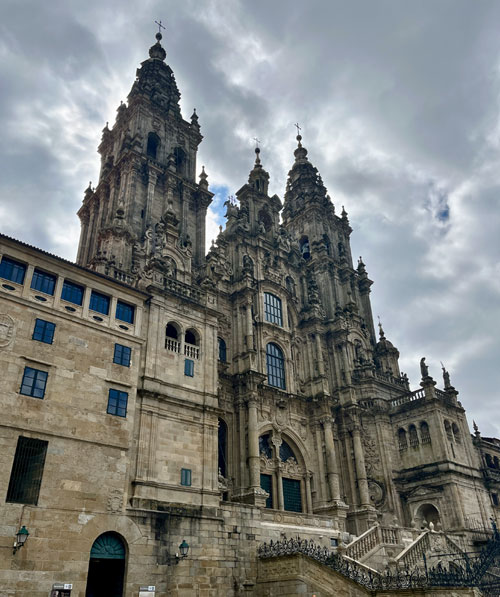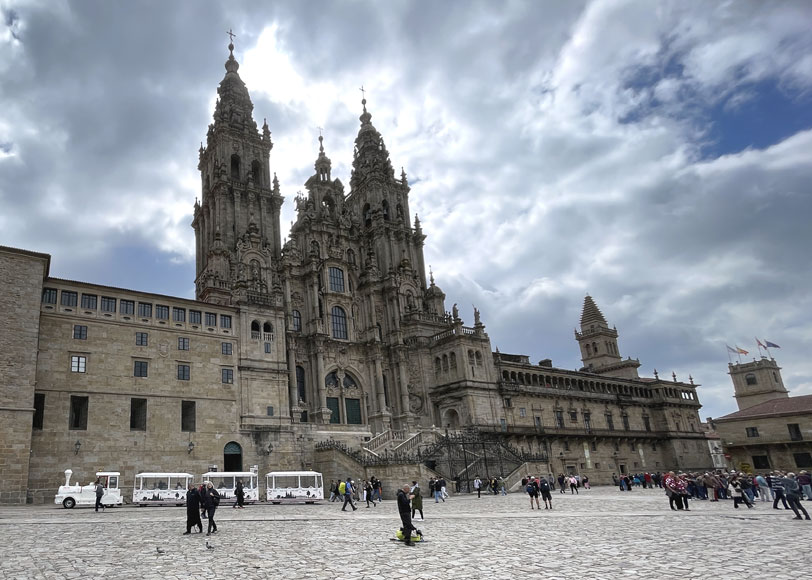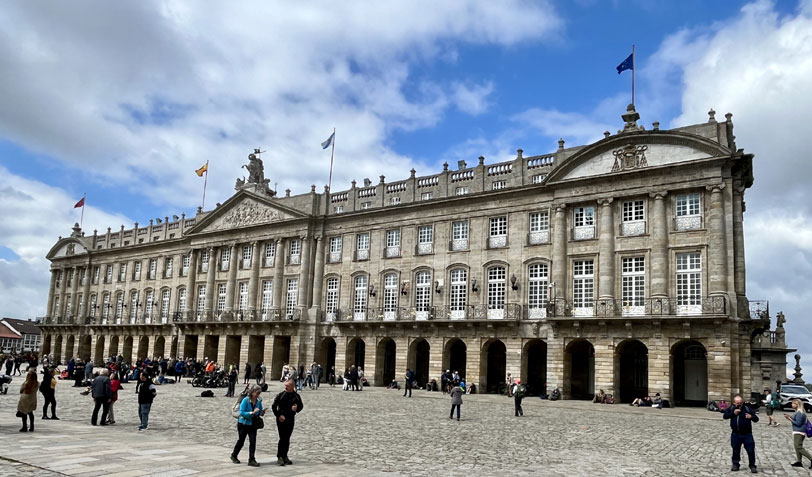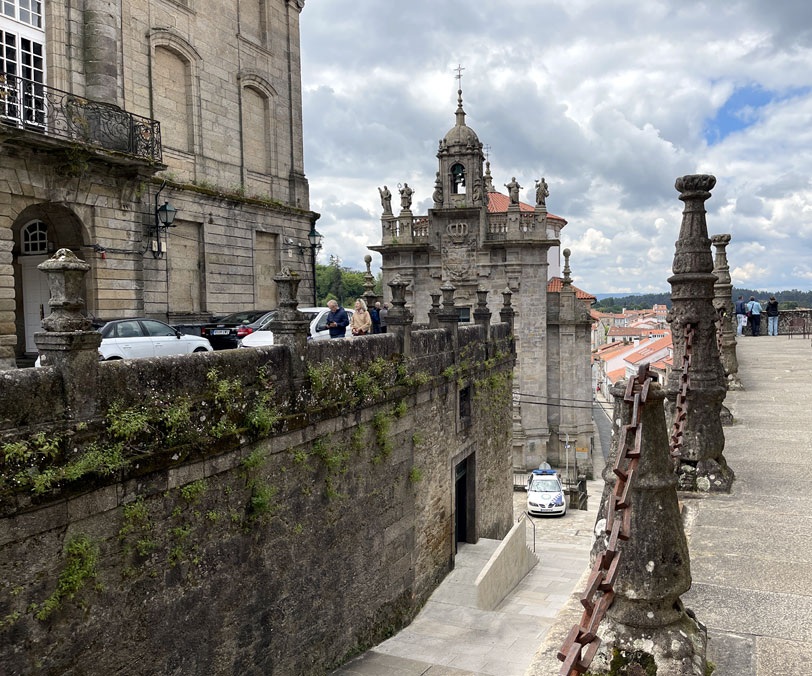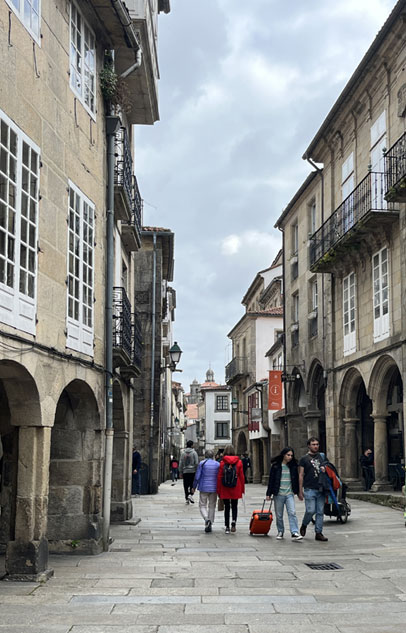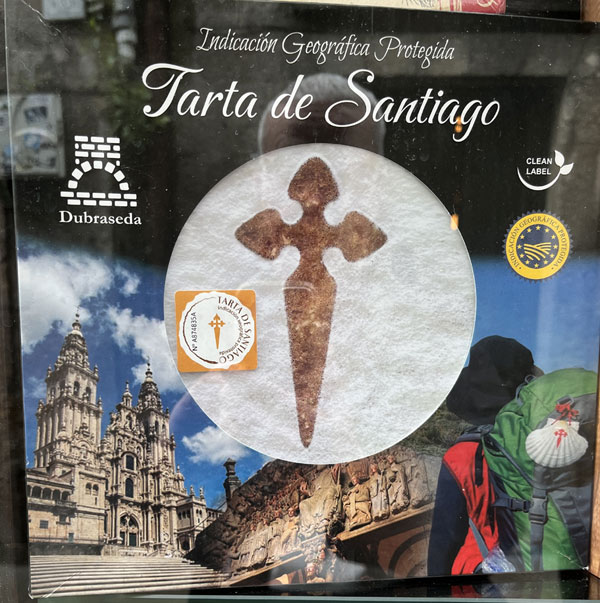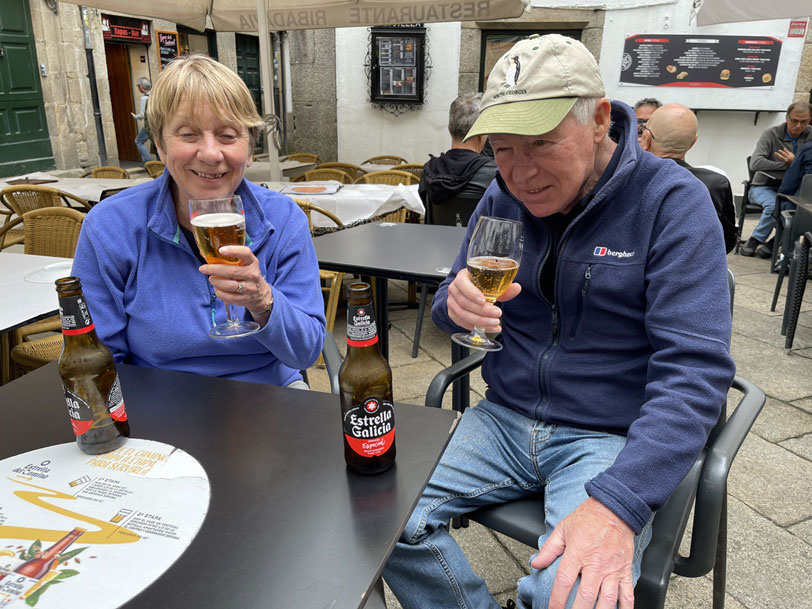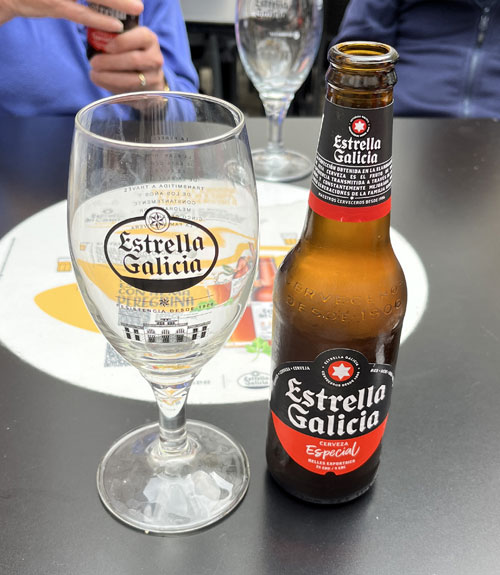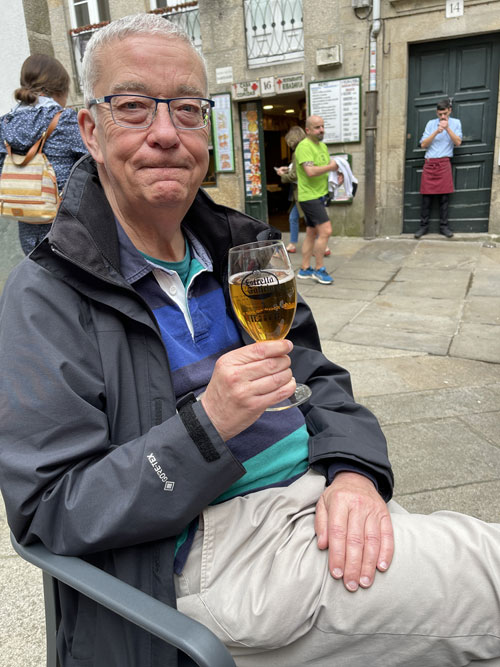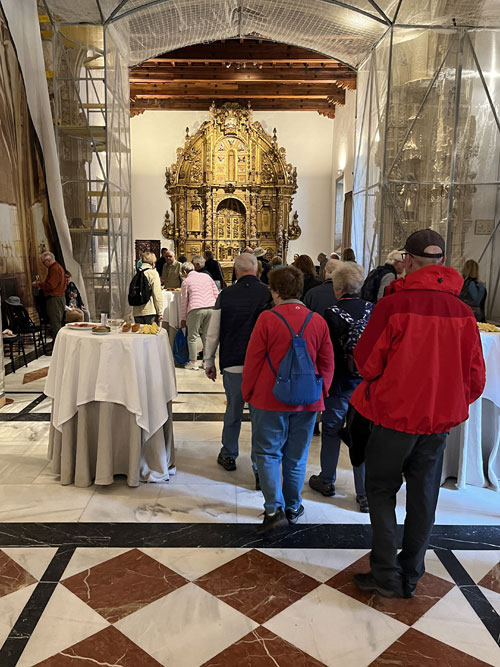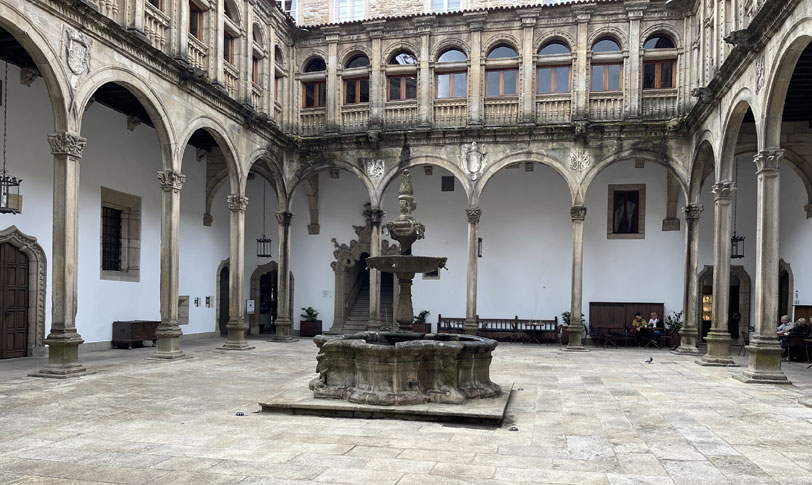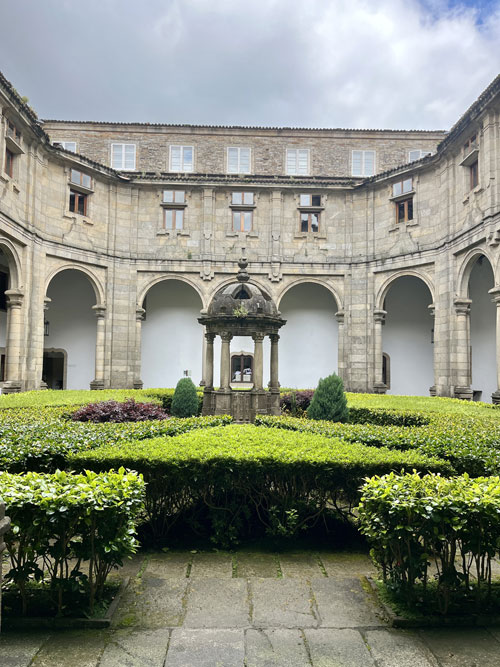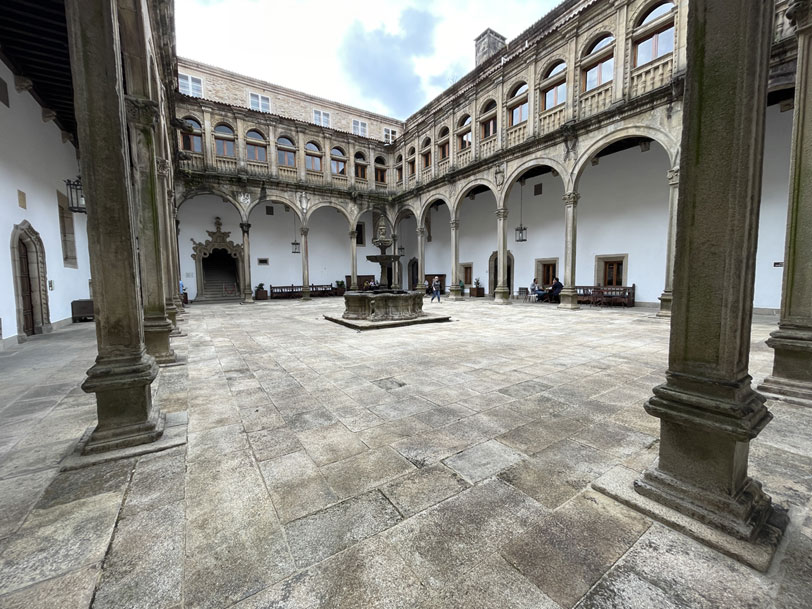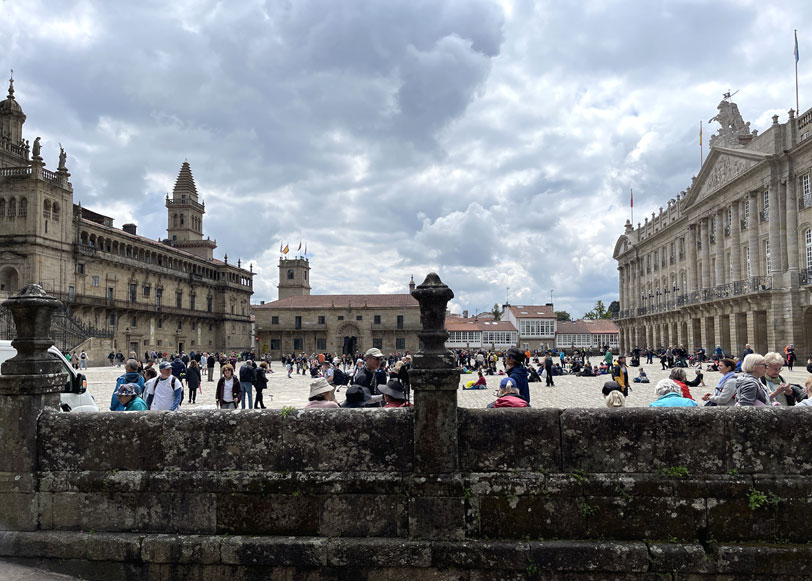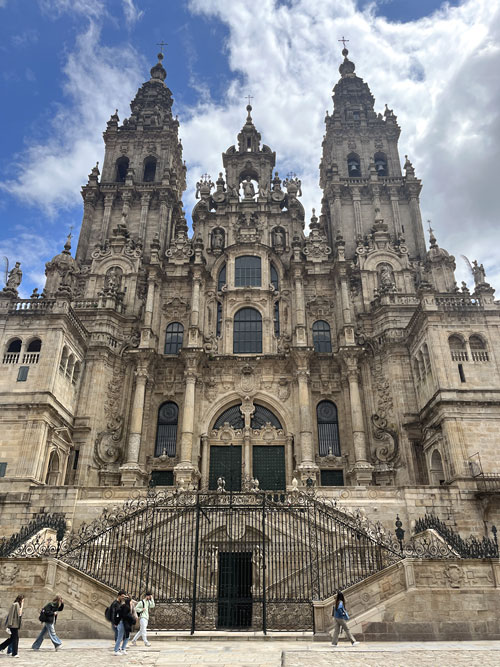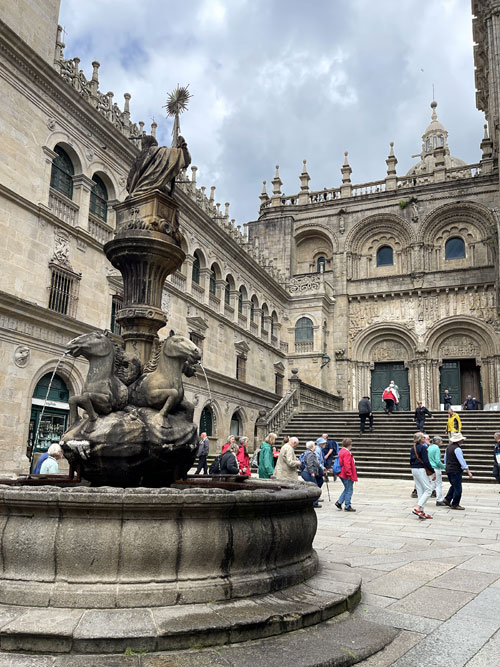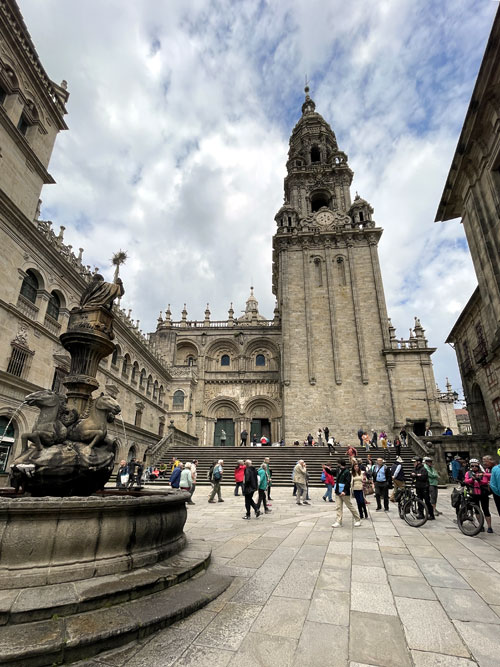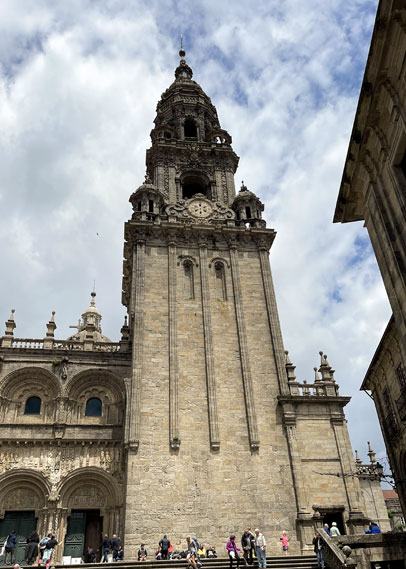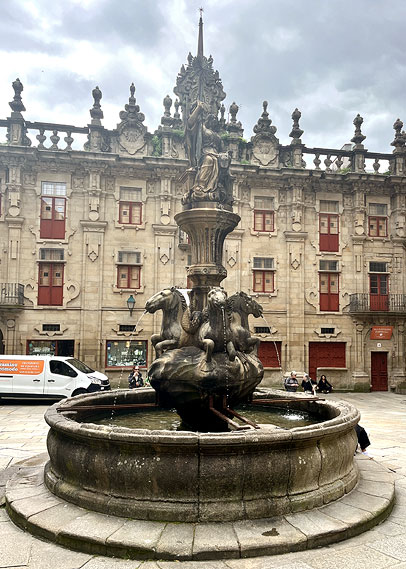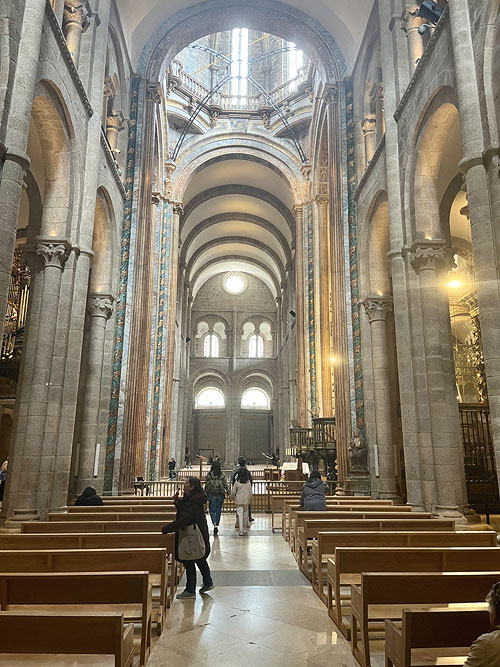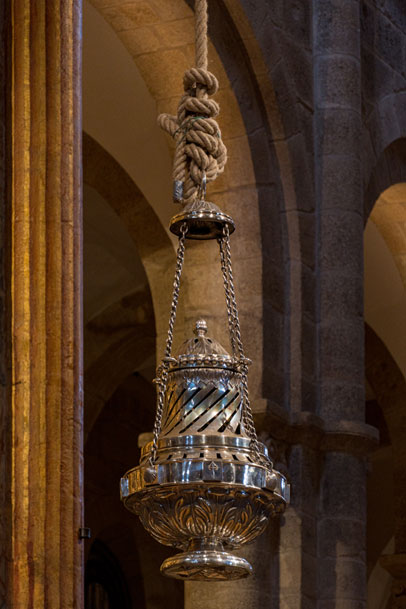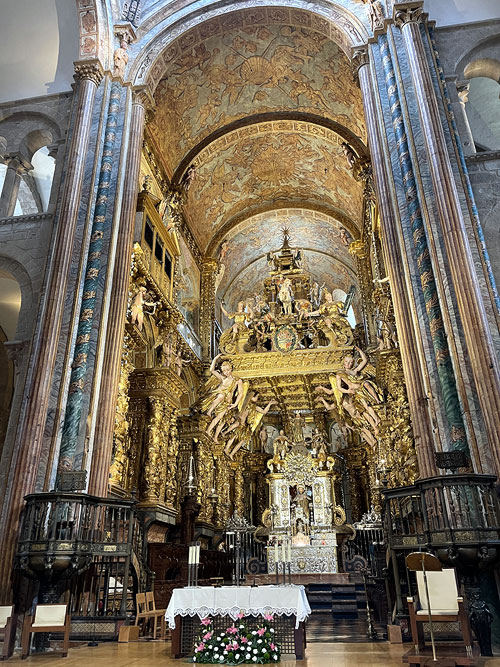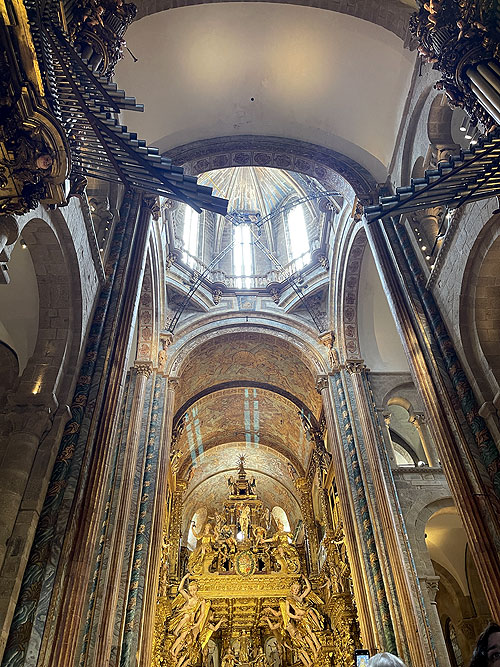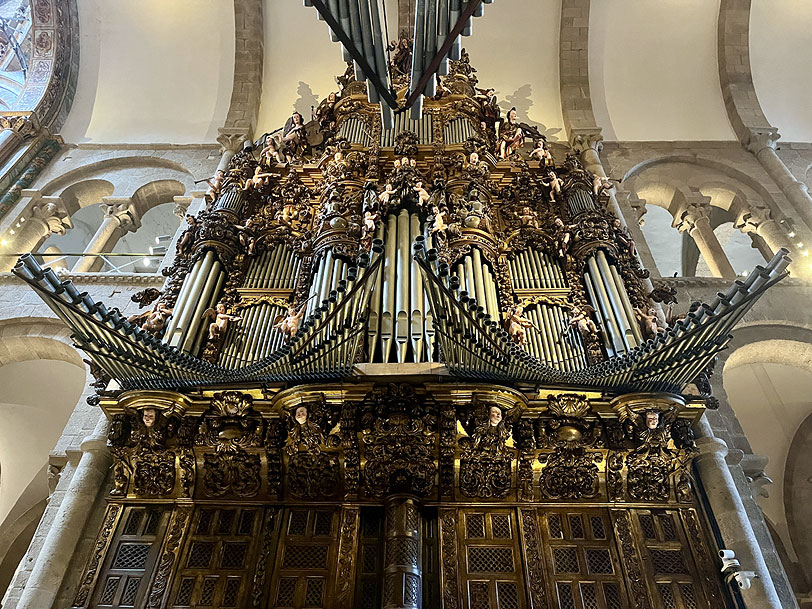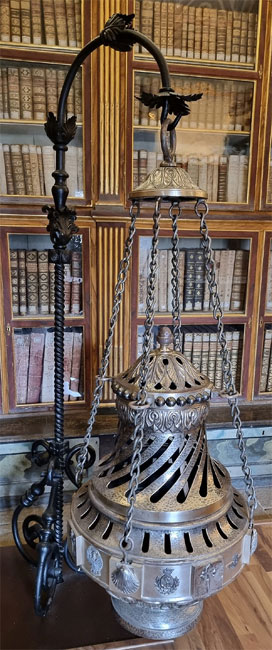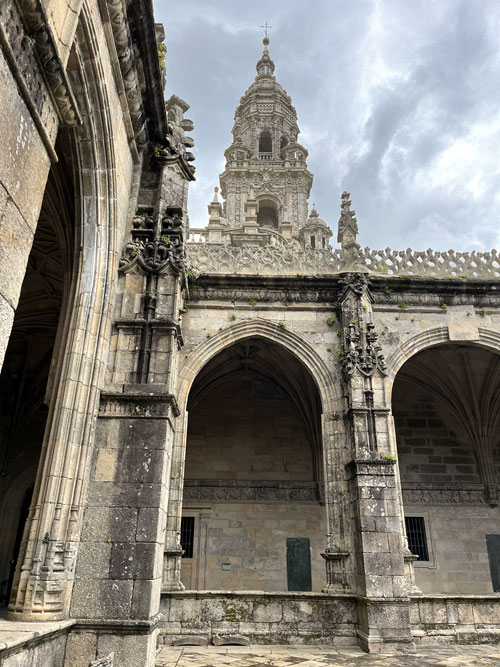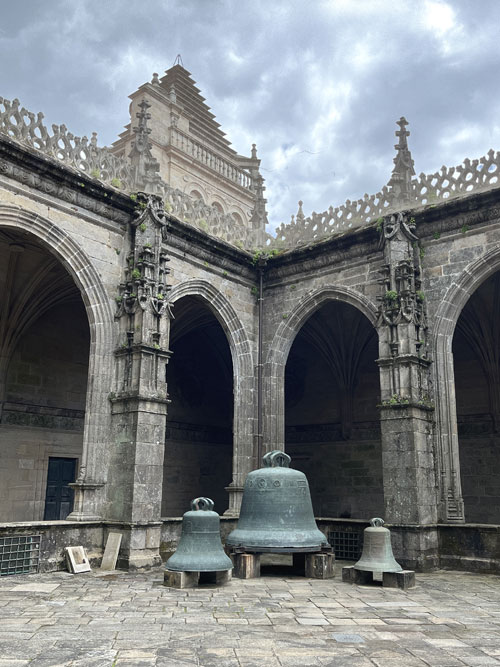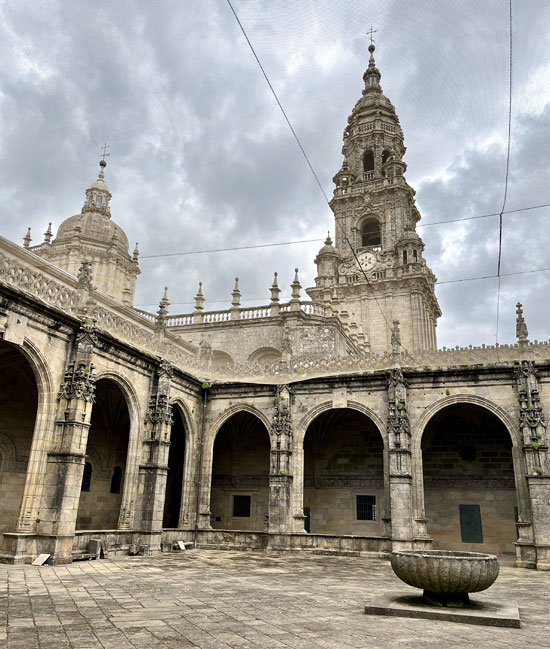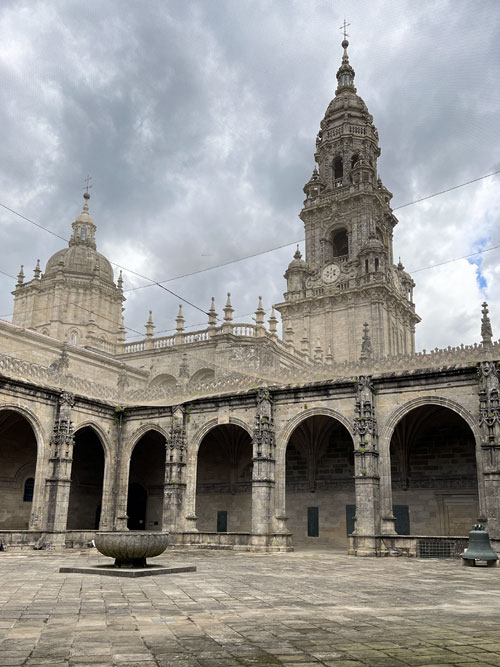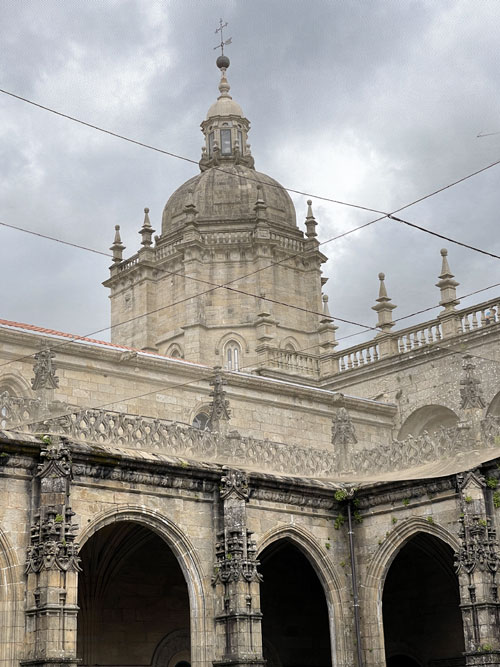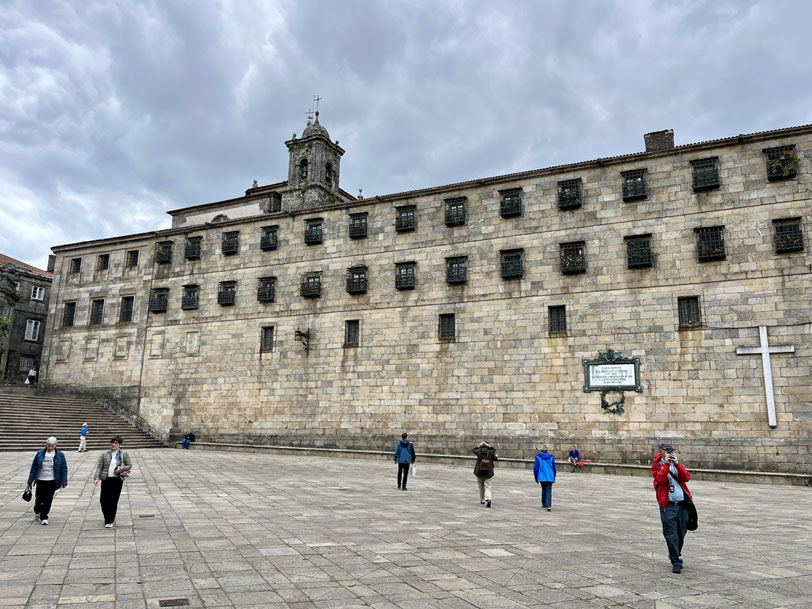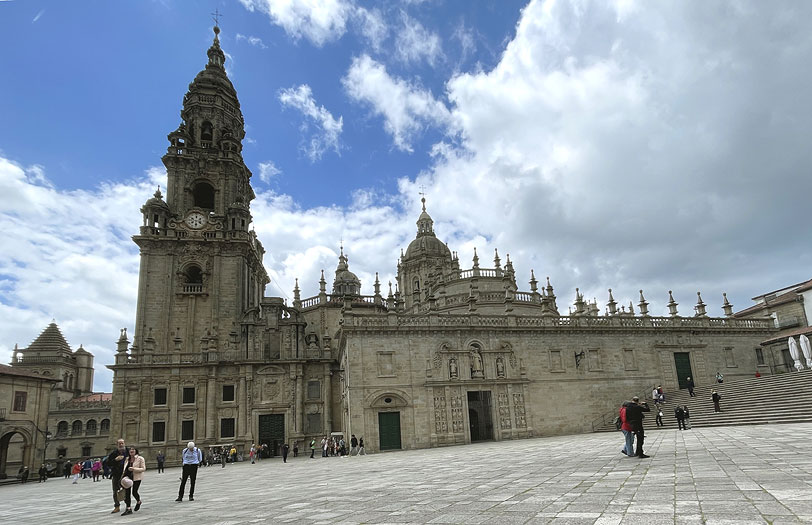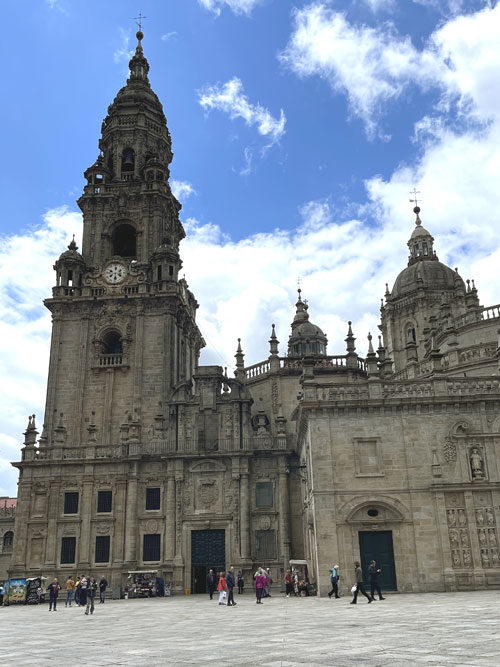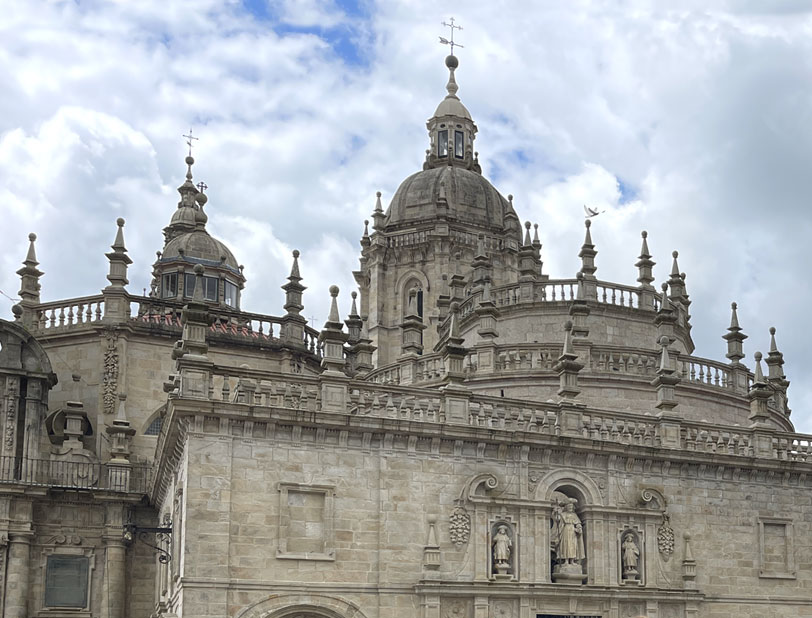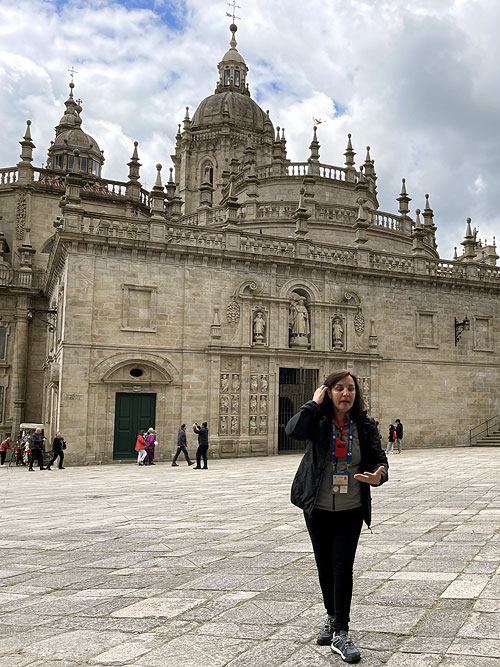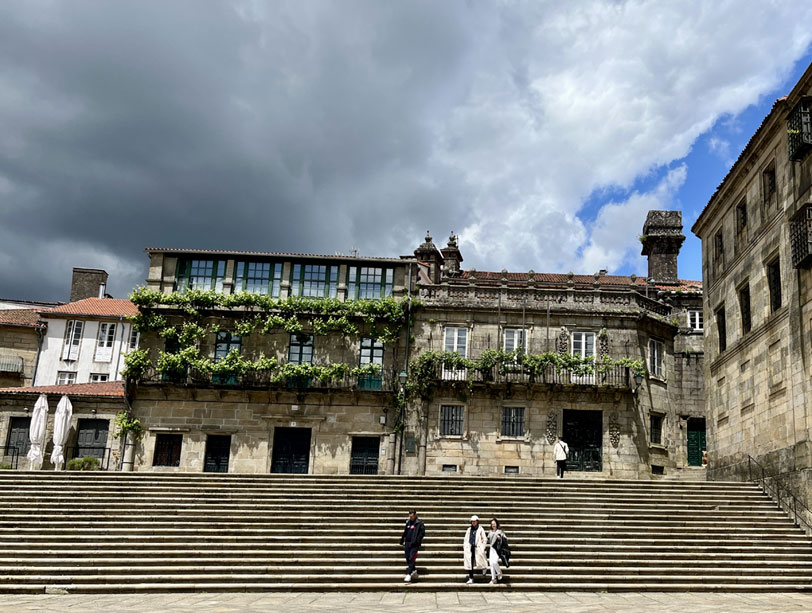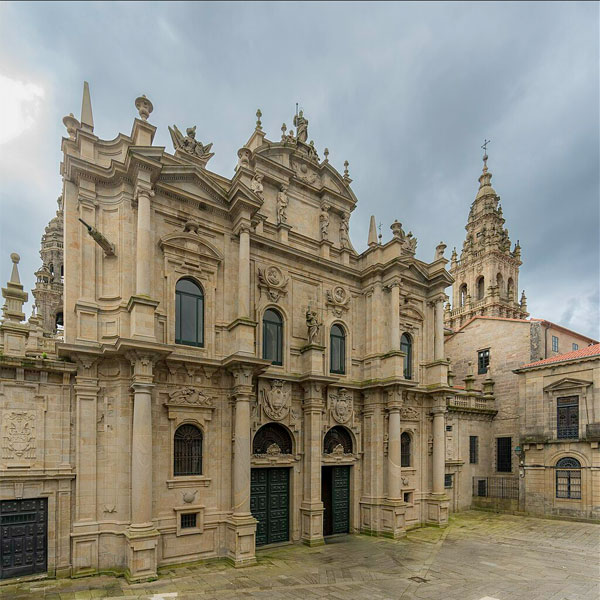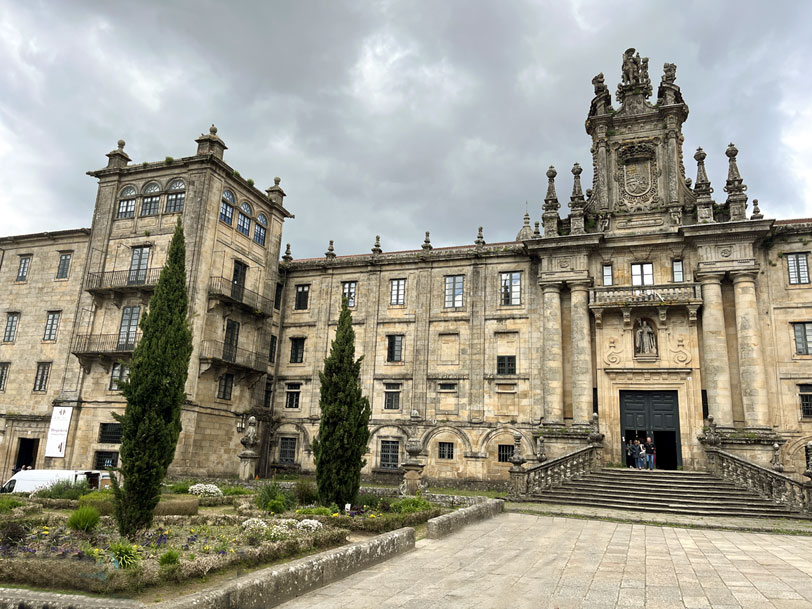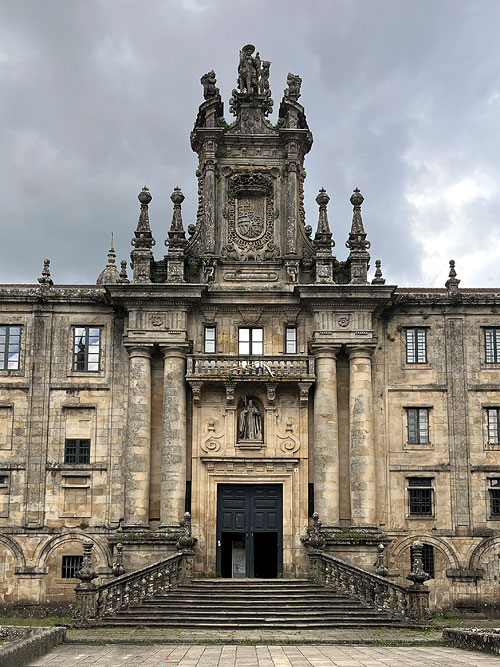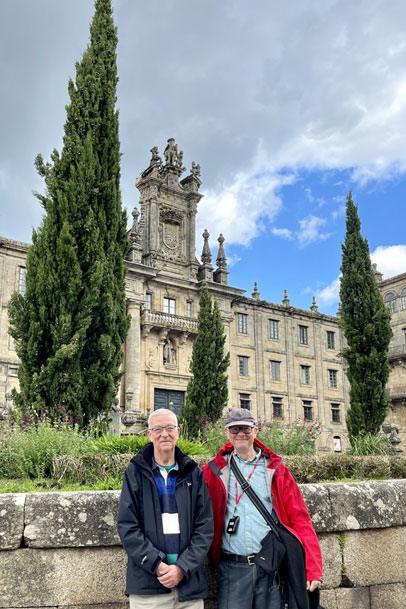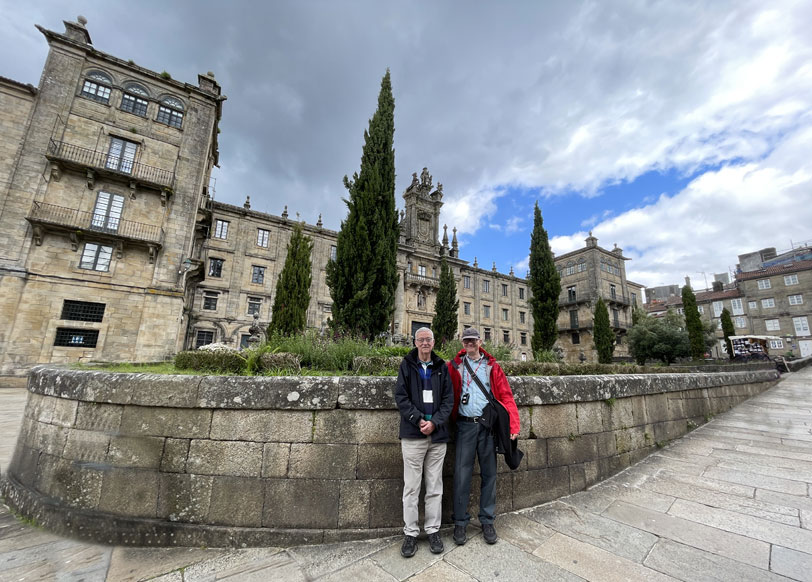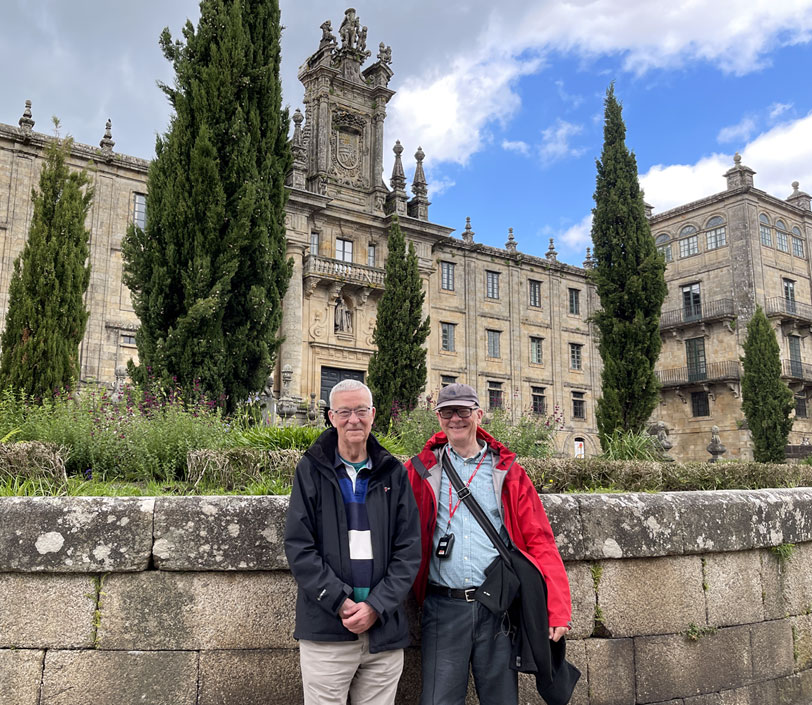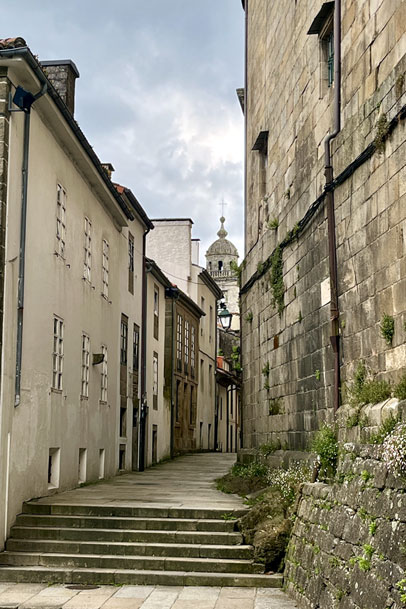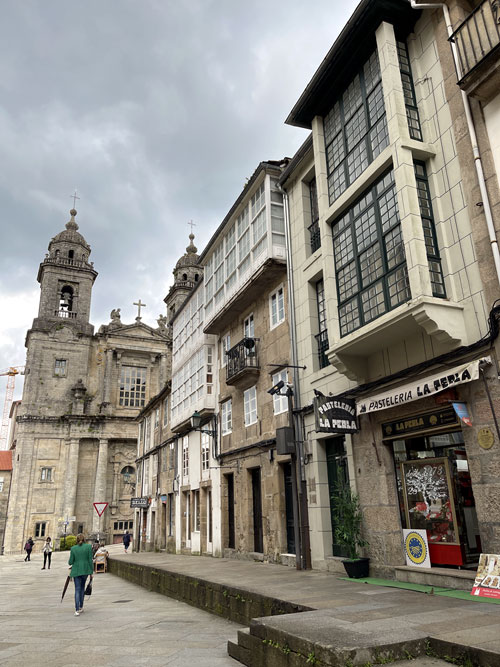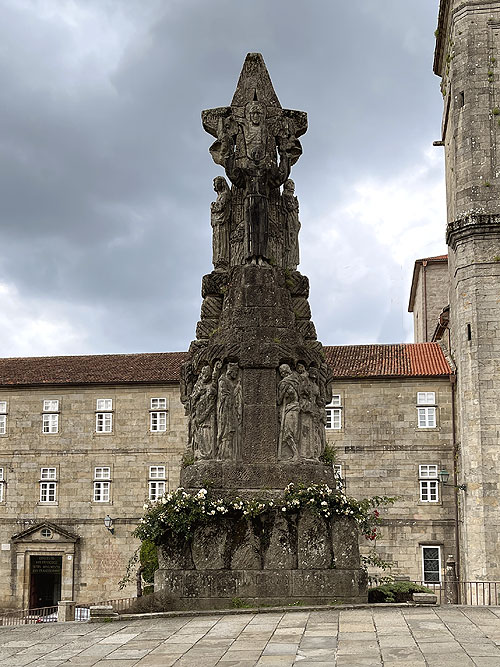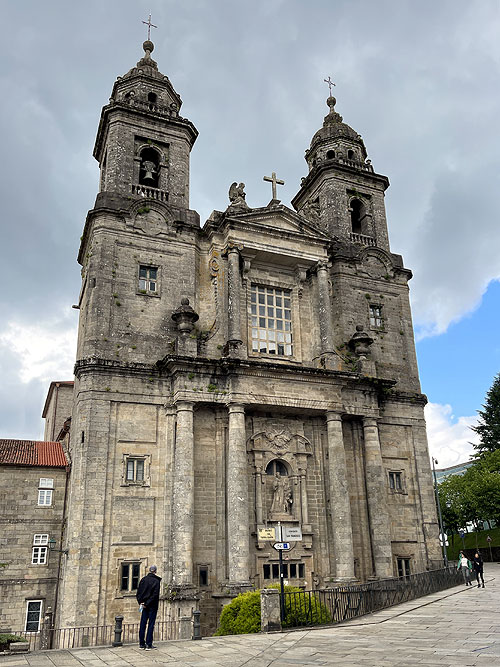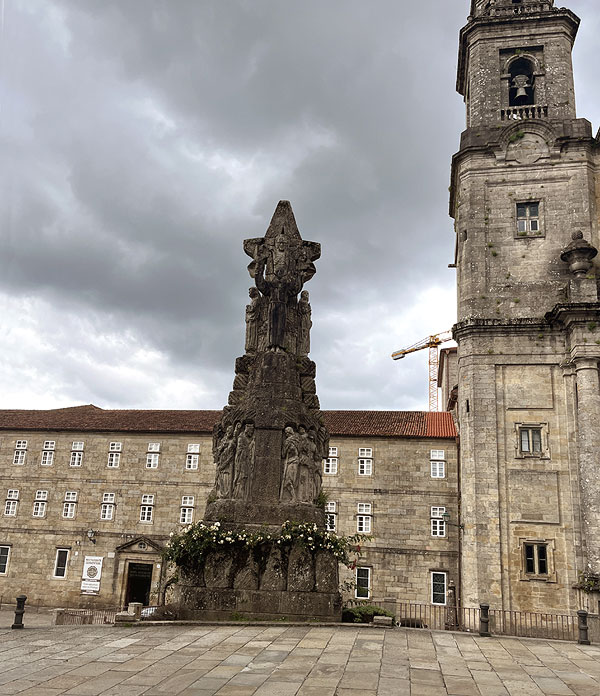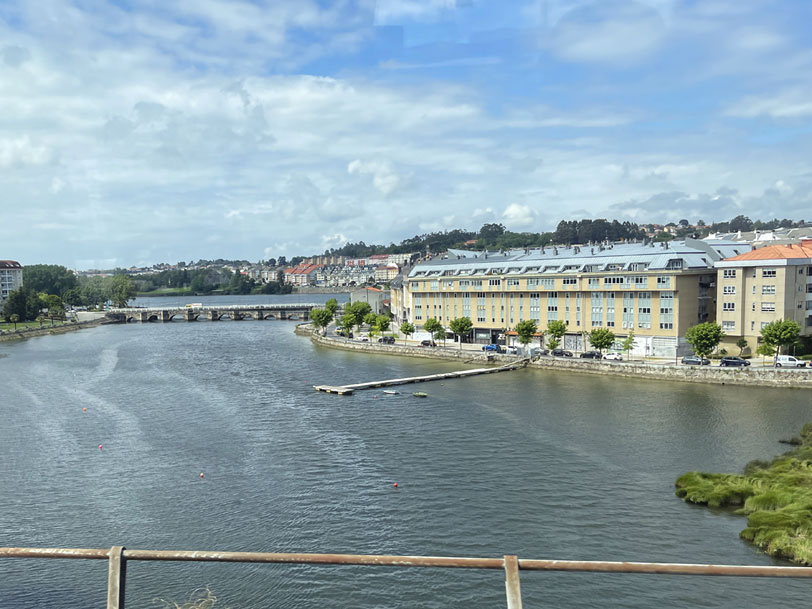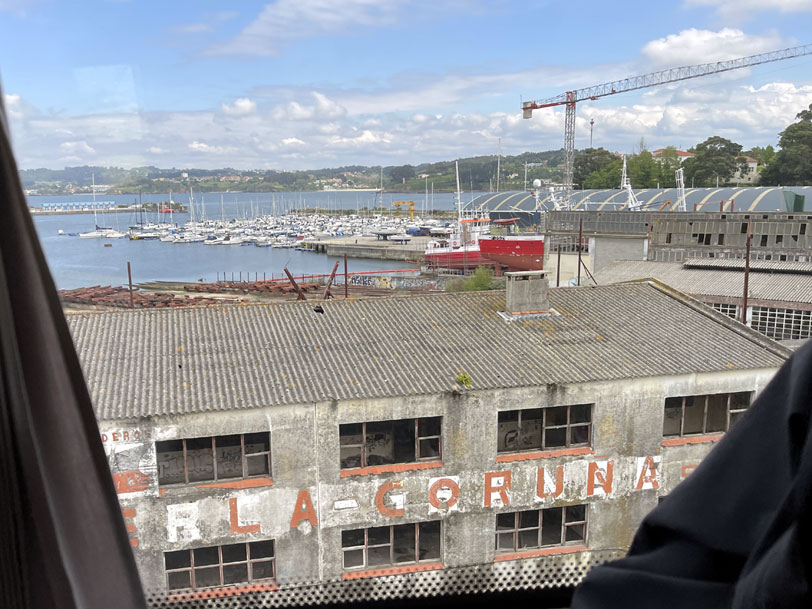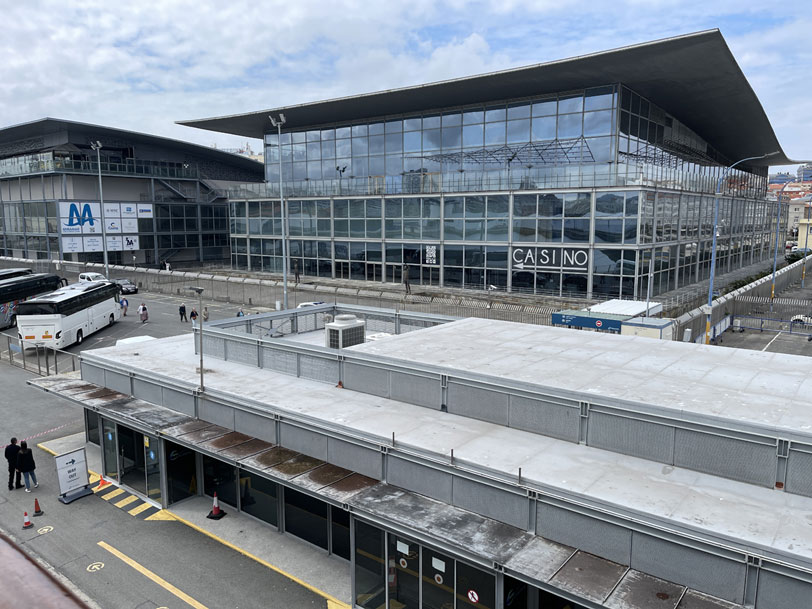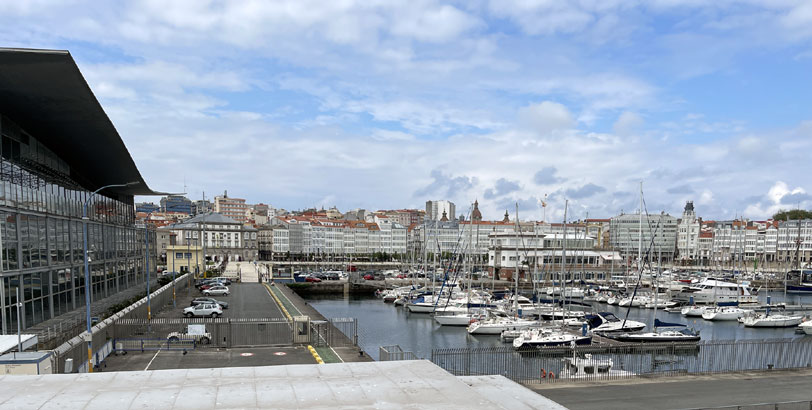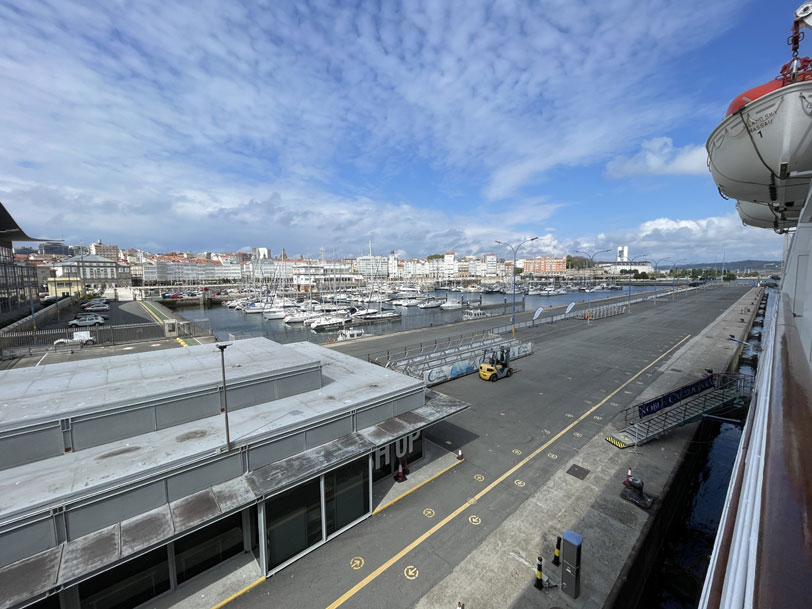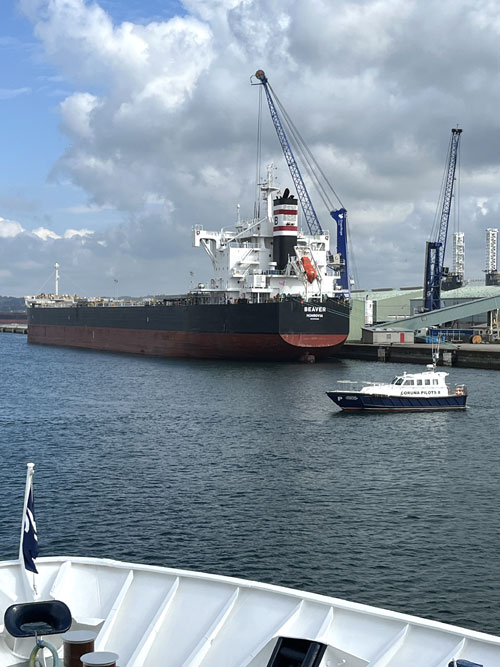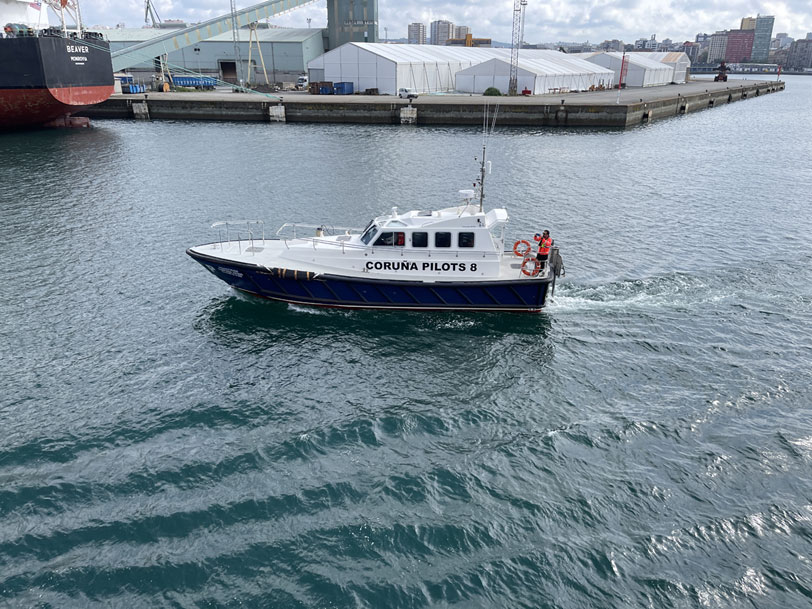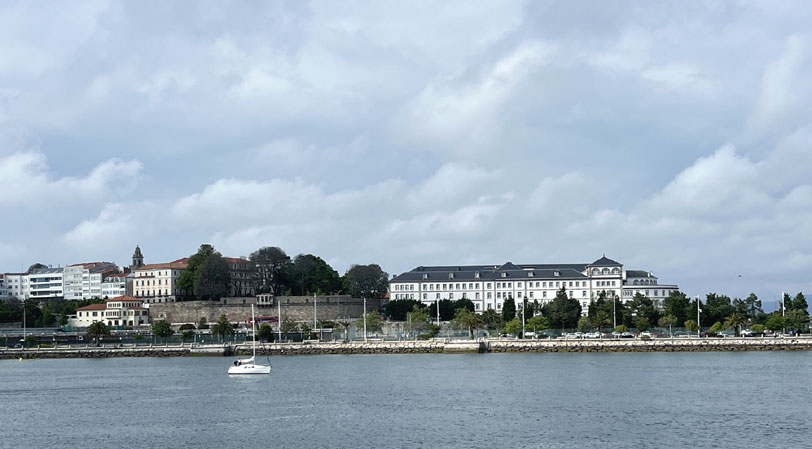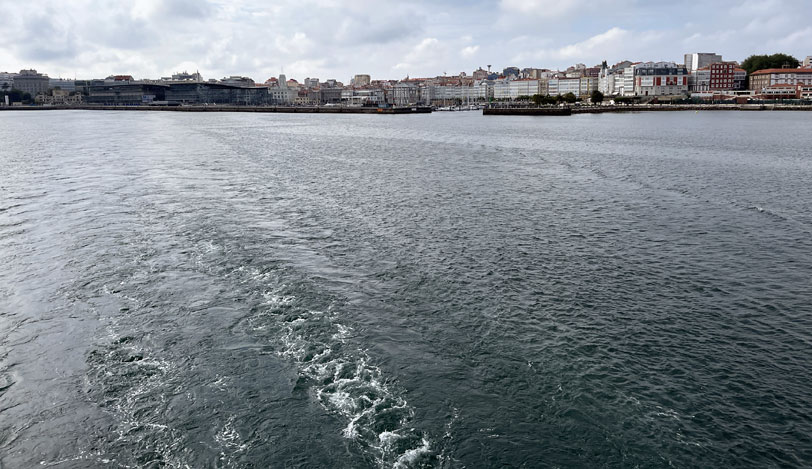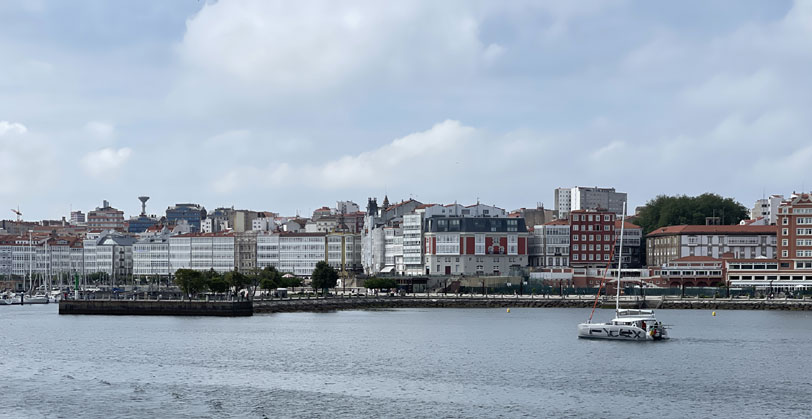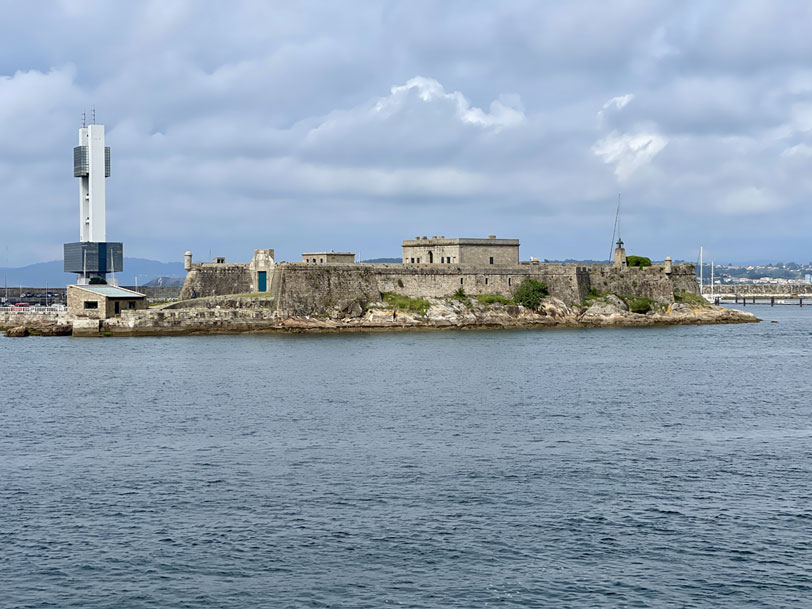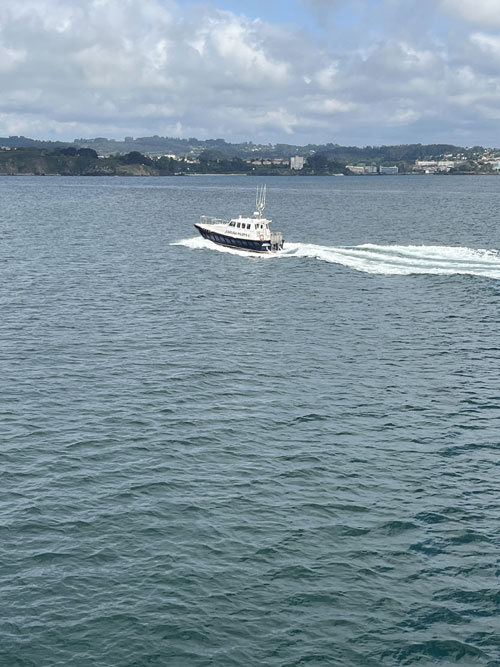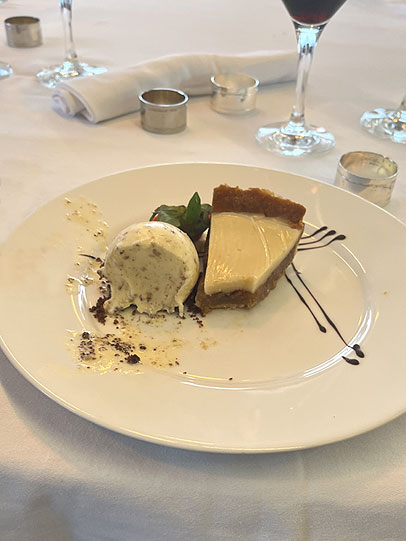|
A visit to Santiago da Compostela
from the port of La Coruna
|
|
|
|
|
We had clearly slept very well, because
when we awoke we were already docked in the Galician port
of La Coruna (also known as A
Coruña in the Galician
language).
The early morning scene from the ship
was beautifully tranquil and calm. We hoped that the rest
of the day would stay that way, although we were fully
aware that our destination for today, Santiago da Compostela,
is a city popular with pilgrims from all over the world
and that it might therefore be quite crowded.
|
|
| |
|
| |
We had a long day ahead,
including a hike, so Geoff decided he needed something a
little more substantial than normal for breakfast. He enjoyed
his French Toast with Maple Syrup. |
|
|
| |
By 9:00 am, we were
on our way. The distance shown below includes the return
trip. Our coach was the only one going directly to the village
of Villestro, from where we would be walking to Obradoiro
Square, the main square in Santiago da Compostela. At the
end of the day, we would return directly from the city's
coach station to our ship at the cruise terminal in La Coruna. |
|
|
| |
At just before 10:30
am, we arrived in the village of Villestro, the starting
point for our walk. |
|
|
| |
This is the route we
walked. |
|
|
| |
|
| |
Another
horreo, very similar to the one we had seen yesterday at Pazo De
Rubianes. |
|
| |
Our walk today is one
of many well-trodden walks in this area and so it is well
signposted. Many people walk hundreds of miles on pilgrimages
to Santiago, but we were only doing a small section of one
of the walks and not for any religious reasons. It was just
good to get some exercise in the countryside, see the scenery
and admire the wild flowers. |
|
|
|
| |
|
| |
|
| |
|
| |
In some parts, there
were some fairly steep inclines, but for the most part,
it was very flat. |
|
|
|
| |
|
| |
|
|
| |
|
| |
|
| |
|
|
| |
|
| |
From about half way along
the walk, we began to get glimpses of Santiago. |
|
|
| |
|
| |
|
| |
|
|
| |
|
|
| |
|
| |
|
| |
Our group walked quite
briskly and before we knew it we were entering the outskirts
of the city. |
|
|
| |
|
| |
|
| |
|
|
| |
|
| |
|
|
| |
|
|
| |
A neoclassical palace,
Pazo de Raxoi ("Palace of Raxoi"), is located
on the square opposite the cathedral and is the seat of
the city council and regional government. |
|
|
| |
|
| |
Our guide informed us
that we had one hour of free time before lunch, after which
we would be visiting the cathedral, so we decided to go
off and do a bit random exploring. |
|
|
| |
|
| |
|
| |
Tarta de Santiago was
on sale everywhere. Coincidently, we had eaten this during
our flight from Santiago, Chile to Madrid in March and had
mistakenly assumed it was named after that city. We now
realised that this city was was far more likely to have
been where it originated. Furthermore, we liked it so much
when we had it on the plane that Geoff recreated it very
successfully after we got home from Chile. |
|
|
| |
With 30 minutes to kill
before lunch and feeling slightly dehydrated after our walk,
how could we resist sitting down and having a drink with
two of our fellow travellers? |
|
|
| |
|
| |
|
| |
|
|
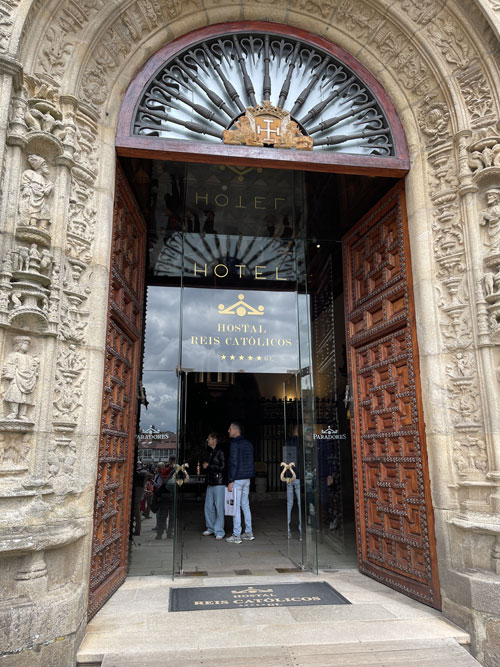 |
| |
Entertainment was provided
while we ate. |
|
|
| |
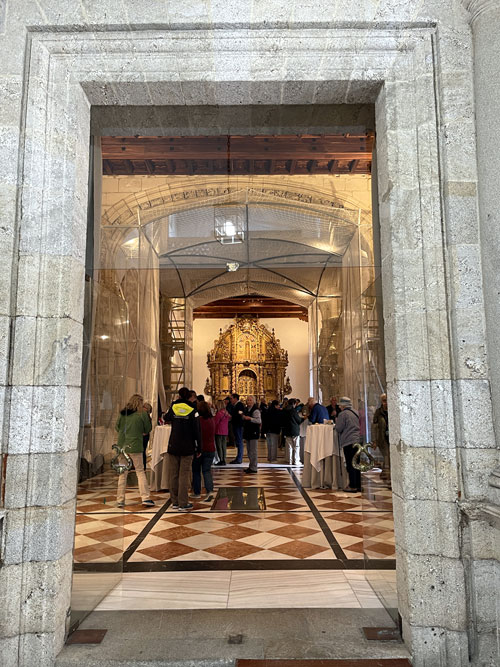 |
|
| |
Lunch was served tapas
style and we were free to explore the inner courtyards of
the hotel afterwards. |
|
|
| |
|
| |
|
| |
After lunch, we gathered
outside the hotel. From there, our guide led us across the
square for our timed visit to the amazing cathedral. |
|
|
| |
|
| |
|
|
| |
|
| |
|
|
|
| |
|
|
| |
A well known feature,
and symbol of the cathedral, is the Botafumeiro,
which dispenses clouds of incense and is one of the largest
of its kind in the world. It is famous for its swinging
motion during the Pilgrim's Mass and other solemn dates,
where it can reach speeds of about 60 km/h. Sadly, it had
been taken down for maintenance when we visited, but we
did see another one in the museum. |
|
|
| |
|
|
| |
|
| |
|
| |
We were given tickets
to go into the museum within the church. We weren't permitted
to take photos. These photos were taken by others (probably
without permission) but they are a nice reminder of what
we actually saw. |
|
|
|
| |
|
An incense burner (thurible)
was in the museum. The most famous one is the Botafumeiro,
which has been in use since the Middle Ages. The second one,
known as La Alcachofa (the Artichoke) or La Repollo (the Cabbage),
was created in 2013. We were told which one this was, but
we can't remember!
|
|
| |
These photos were take
by us in the courtyard just beyond the museum. |
|
|
|
| |
|
| |
|
|
| |
Leaving the cathedral,
we gathered in Quintana
Square for some further explanations of what we had
just seen. |
|
|
| |
|
| |
|
| |
|
| |
|
| |
We left the square via
these steps... |
|
|
| |
...and arrived at the
north facade of the cathedral in Praza da Inmaculada. |
|
|
| |
|
|
| |
|
| |
|
| |
|
| |
|
| |
After our photo session,
we began walking to the coach station... |
|
|
| |
|
| |
|
|
|
| |
|
| |
An hour and a half after
boarding our coach, we were back in La Coruna. |
|
|
| |
|
| |
La Coruna is the region's
second biggest city after Vigo (which we visited a few years
previously). It was clear that this port was designed for
visits by the large cruise ships... quite a contrast from
Vilagarcia de Arousa yesterday! |
|
|
| |
|
| |
By 5:30pm we were all
back on board and at 6:00pm we sailed. |
|
|
| |
|
| |
|
| |
|
| |
|
| |
|
| |
|
| |
|
| |
We toasted our departure
from Spain, and then had dinner as we began our 474 nautical
mile voyage to Guernsey. We were only informed a couple
of months later that the immigration authorities had failed
to record the fact that we had left the Schengen zone, so
we are keeping fingers crossed that there aren't any repurcussions
when we want to visit the zone again). |
|
|
|
| |

|
|







